UNO Magazine launched in 2010 as the first flagship publication of the University of Nebraska at Omaha, the University of Nebraska Foundation and the University of Nebraska at Omaha Alumni Association. It continued a long-standing tradition of formal alumni publications with a new, collaborative format.
Although a university magazine isn’t novel, one feature that makes ours unique is all 38 issues of UNO Magazine have been covered in original artwork. The illustrations, paintings, drawings, photographs and collages – some by UNO alumni – delight and intrigue and depict the theme woven throughout the internal content. This summer, they were all on view at the H. Don and Connie J. Osborne Family Gallery at UNO Criss Library.
A few of the artists reflect on the process they used to create the cover and how their practice has evolved.

LINDA HUBER
Fall 2012
Food
Working slow and paying close attention to every line, detail and tonal value. I followed the reference photo like a map but made sure the result looked like what we see in real life. I used good Bristol paper, H, b, 4b graphite pencils. A paper stump and plain tissue for blending areas. A bit of kneaded eraser to lighten areas, and an electric eraser to brighten up teeny tiny areas.
I still draw with the same pencils, supplies and technicians. But I am semi-retired from taking on commissions. I do, however, teach drawing lessons online and have since 2010. I love helping others advance to greater levels in graphite pencil.
It was such an honor to be asked to do the cover. It truly was such a fun drawing, one of my top personal favorites. I loved that only by looking at the back cover you knew why she had that expression on her face!
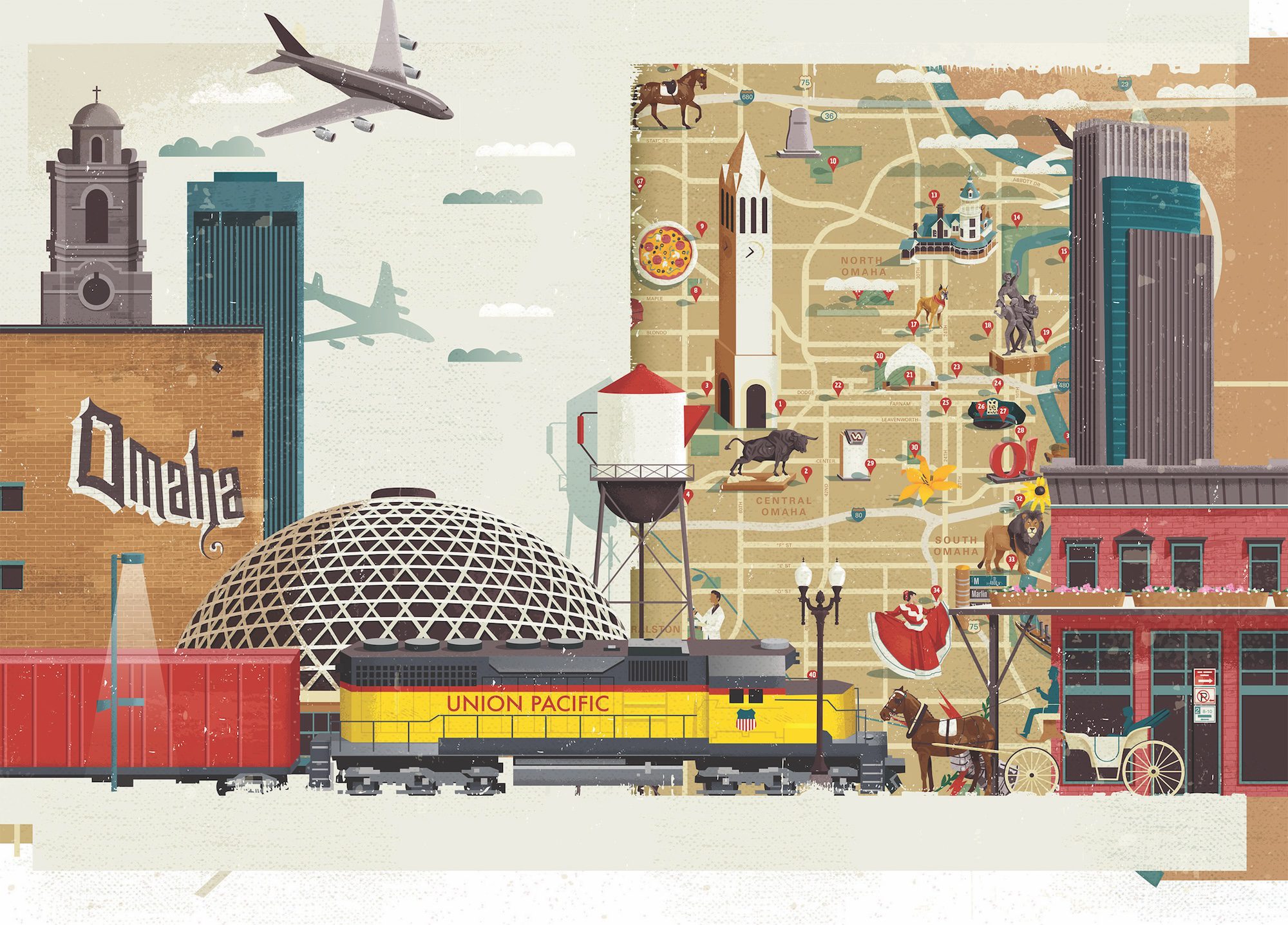
GREG PAPROCKI
Spring 2015
Omaha
When I get an art project, I first do a lot of research gathering images on the topic. Locations, people, activities, etc. Whatever is relevant to the subject I’m going to illustrate.
Then I do a very rough pencil sketch. It can be as simple as stick people. What I’m looking for is composition. From there I will use that rough sketch as a basis for drawing the elements that will go into the final art. These are much tighter but not quite final sketch quality. I scan all this and take these pieces into Photoshop where I lay them into my rough sketch which has the correct dimension for the final art. When I feel like it’s close to how I want the final art to look I’ll print this out very lightly. Then I’ll go over that sketch tightening up everything to the correct angles, correcting anything that isn’t looking right.
Once the tight sketch is done, I’ll bring this into and Illustrator file which is set up for the dimensions of the final art. Then I have to draw everything in Adobe Illustrator matching my sketch. I’ll also make my own texture with pencils, crayons, markers, etc. to help with shading and to add a traditional touch to it. Sometimes I’ll draw elements of my art using a lightboard. I’ll draw over my pencil sketch with a separate piece of paper to give a hand-drawn look. I’ll then scan that piece and bring it into my file.
The final touch, which I don’t always need or use, is a layer of textures that I created to overlay the art to give it an aged appearance.
gregpaprocki.com
Instagram: @greg_paprocki
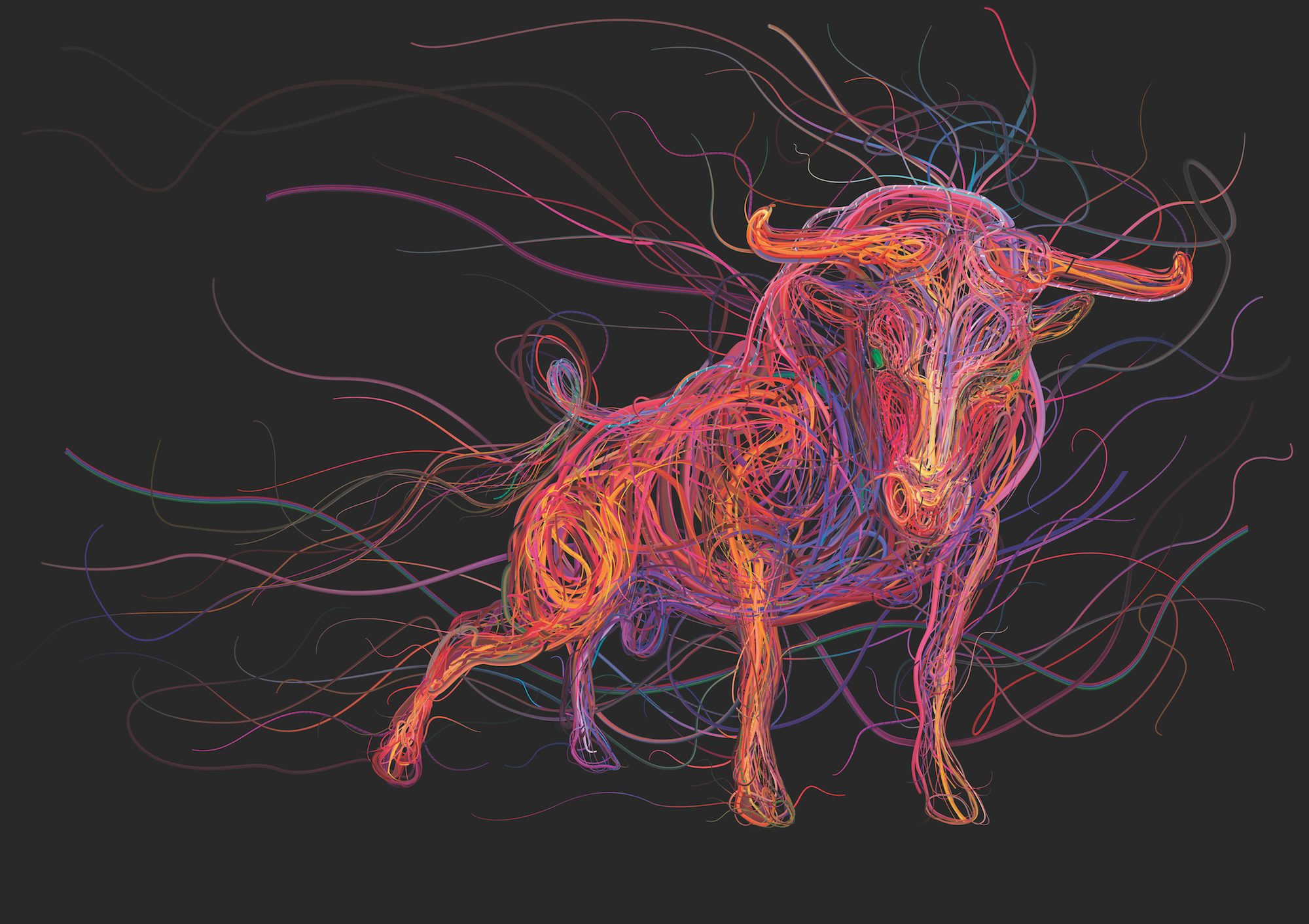
CHARIS TSEVIS
Fall 2015
Wired
Creating the bull mascot was a detailed process. I began by understanding the bull’s symbolism of strength and energy. I then crafted a rough sketch to capture its form. Using Adobe Photoshop, Illustrator and Synthetik Studio Artist, I developed a complex web of vibrant wires and cables, representing modernity and connectivity. The colors were carefully chosen for their vibrancy and symbolism. Lastly, I refined each wire and detail to ensure depth and realism in the final piece.
My artistic practice has evolved significantly. I’ve embraced advanced digital tools and explored new mediums, seamlessly blending physical and digital art. This has allowed me to push creative boundaries and experiment with unique visual effects. My focus has also shifted towards deeper storytelling, aiming to convey more profound narratives in each piece.
Recently, I’ve incorporated AI tools like Stable Diffusion and ComfyUI into my workflow. These technologies assist in various stages of my work, from initial concept generation to refining details, enhancing my ability to visualize complex ideas and execute them with precision. Additionally, I’ve been involved in more collaborative projects, which have broadened my perspective and introduced new techniques and inspirations into my art. This continuous evolution keeps my work dynamic and in tune with the latest creative possibilities.
Art at the intersection of technology excites me, opening up endless creative possibilities. Staying adaptable and continuously learning is crucial in this ever-evolving field. I’m deeply inspired by the global art community and believe in the power of collaboration and mutual support among artists to foster growth and innovation.
Equally important to me is maintaining strong ties with academia, colleges and universities. These connections provide a constant source of inspiration and knowledge. Engaging with educational institutions and thought leaders keeps me in touch with fresh ideas and emerging trends. As a true believer in the value of education, I am committed to lifelong learning and continuously seek opportunities to expand my horizons and evolve as an artist.
tsevis.com
Instagram: @tsevis

BHARTI DAYAL
Fall 2016
Journeys
It’s like going back into sweet memory lane. I became very happy when [they asked] me to create UNO Magazine cover, especially where my elephants were hooked to the Oscar Meyer wiener mobile in 2016. Since then, my paintings evolved with my experiences of life. Each of them tells a different story with different emotions and newer energy. Exploring and innovating more by pushing boundaries of limitation.
novica.com/a/bharti-dayal/2027
Instagram: @bhartidayal
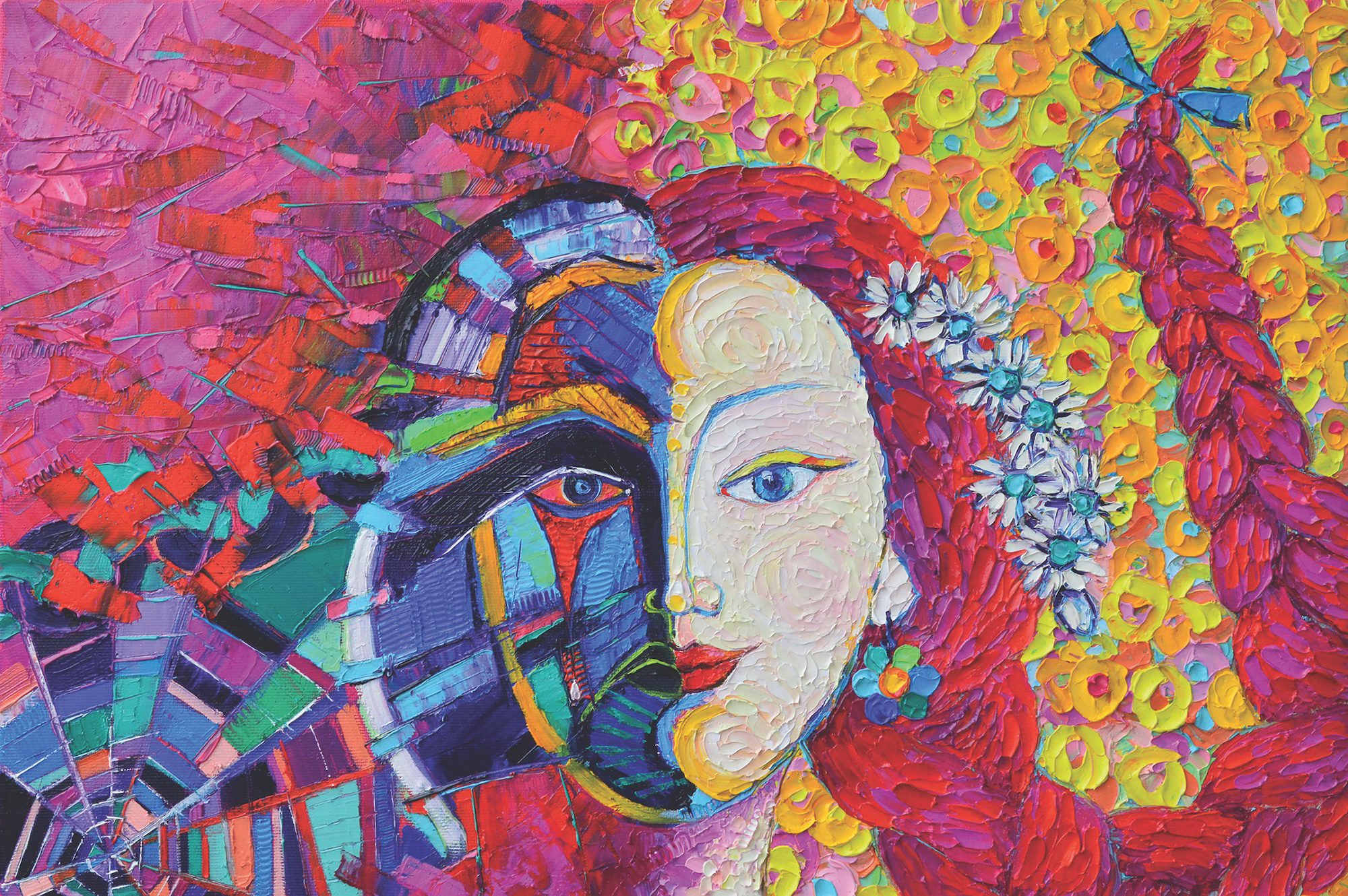
ANA MARIA EDULESCU
Winter 2018
The Art of Healing
When you asked me to represent the transformative power of art, I was thinking instantly of how to paint metamorphosis. Practically my approach started with the concept. The transition from torment to freedom and peace, from darkness to light visually solved from an abstracted spider web to serenity, from cold hues and rectangular, acute shapes to warm tones and curved lines. This is how “Metamorphosis “ was born.
edulescu-ana-maria.pixels.com
Instagram: @anamariaedulescu
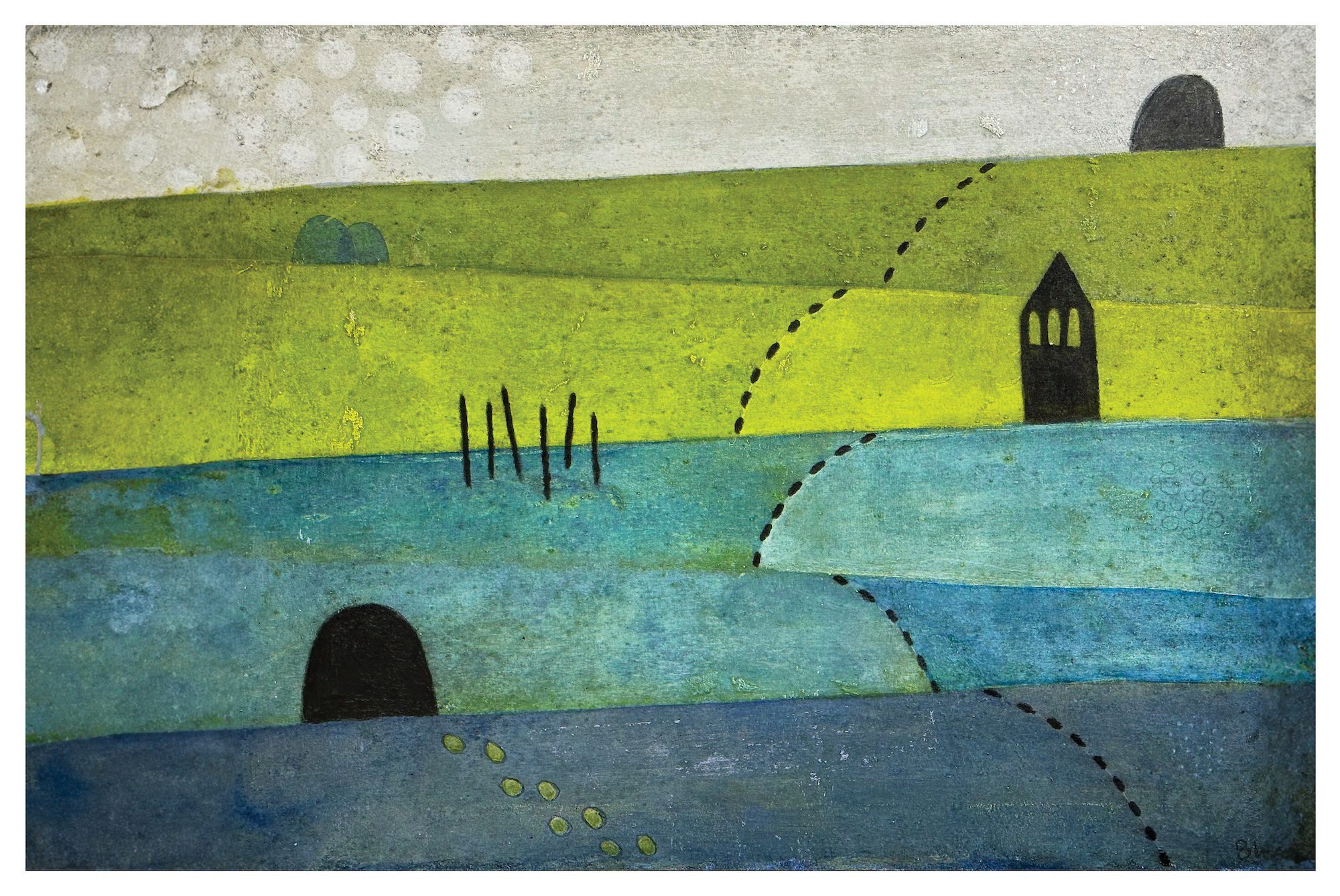
BRIAN WETJEN
Fall 2023
Going the Distance
First of all, it was fun to have an “assignment” to work towards. Knowing the theme for the issue helped me conceptualize what that might mean to the audience in general, and it also helped me think about what it meant to me as a student at UNO.
Something that kept coming back to me was location and presence. For most of my time at UNO, I was living with roommates on the edge of Dundee, so it was quick and easy to get to campus. I’d regularly ride my bike when the weather was nice, as I could avoid dealing with parking and there was a rack right between the Durham Science building and the Weber Fine Arts building, and those were the two places where I spent the most time.
Riding through the gentle hills surrounding UNO was always so pleasant. Much better than driving. Though most of the time I was driving to campus and then walking from where I parked. That would also frequently be in the Elmwood area. I particularly liked when I was headed to the sculpture studio, as it was right on the edge of Elmwood Park and the woods. There was a beautiful view out the studio’s back door.
All of these things came back to me as I was thinking about “Going the Distance” and how UNO was both nestled in my mind as this place in the midtown zone surrounded by beautiful rolling hills and as a period in my life where I experienced tremendous growth and learning in so many ways.
Rolling hills and paths kept coming up for me, and UNO’s position in the city. I kept seeing the bell tower and open spaces, the roads and sidewalks, and the openness of the space amongst the surrounding neighborhoods.
I wanted to capture some of that and connect the image to my experience of UNO as a commuter and as an alum who sees the campus all the time but doesn’t interact with the university on a regular basis.
Something I didn’t anticipate out of the process was finding more ways to incorporate storytelling into my work. I’ve been in a fairly abstract and minimalist mode for quite a while where the concepts driving my imagery haven’t necessarily been apparent. Putting a specific location into context within my work and having an actual experienced narrative supporting it gave me a lot of ideas about how to find inspiration for new ideas.
Most of all I’d just like to share and express my gratitude for being involved. I felt so fortunate to be able to study fine art in college. That was facilitated by all I had learned in the Computer Science program and recognizing that I had an incredible opportunity to focus on Web Development as a career and that I’d had enough math and programming classes for that career path. Switching my major to Fine Art allowed me to follow what I knew was my calling. Working on the magazine cover art brought me back to many of the things I hadn’t thought about or felt for quite some time. So now I’m sitting with great feelings of gratitude for my education and college experience, my further pursuit of my art and studio practice, the relationships I have with friends who appreciate my work and the school where I found the space, community and support for what I wanted (and needed) to learn.
brianwetjen.com
Instagram: @wetchman
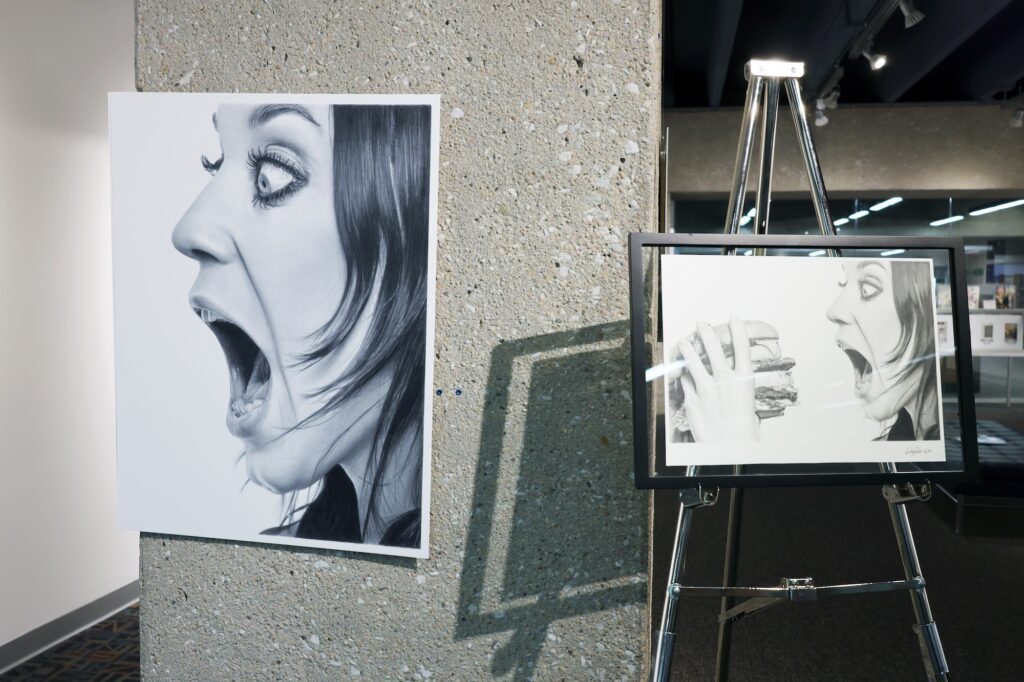
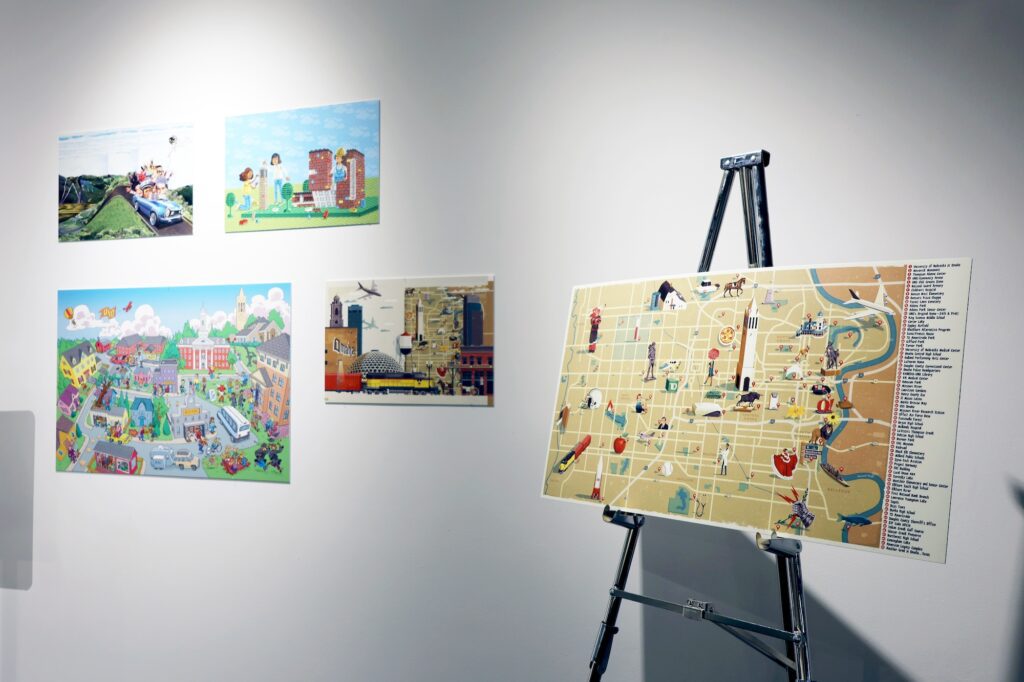
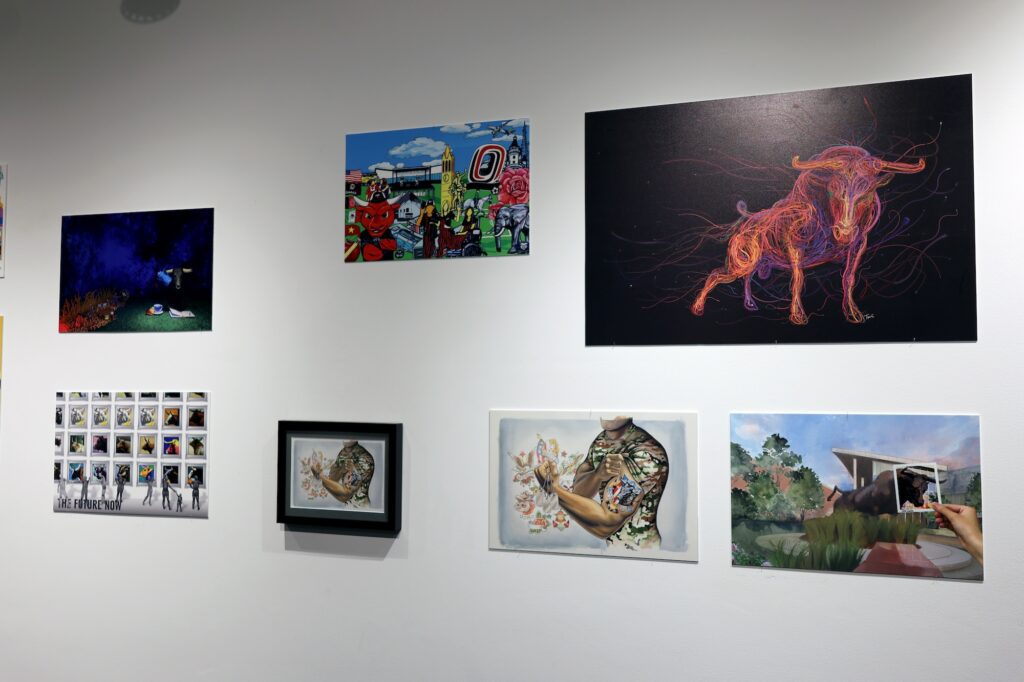
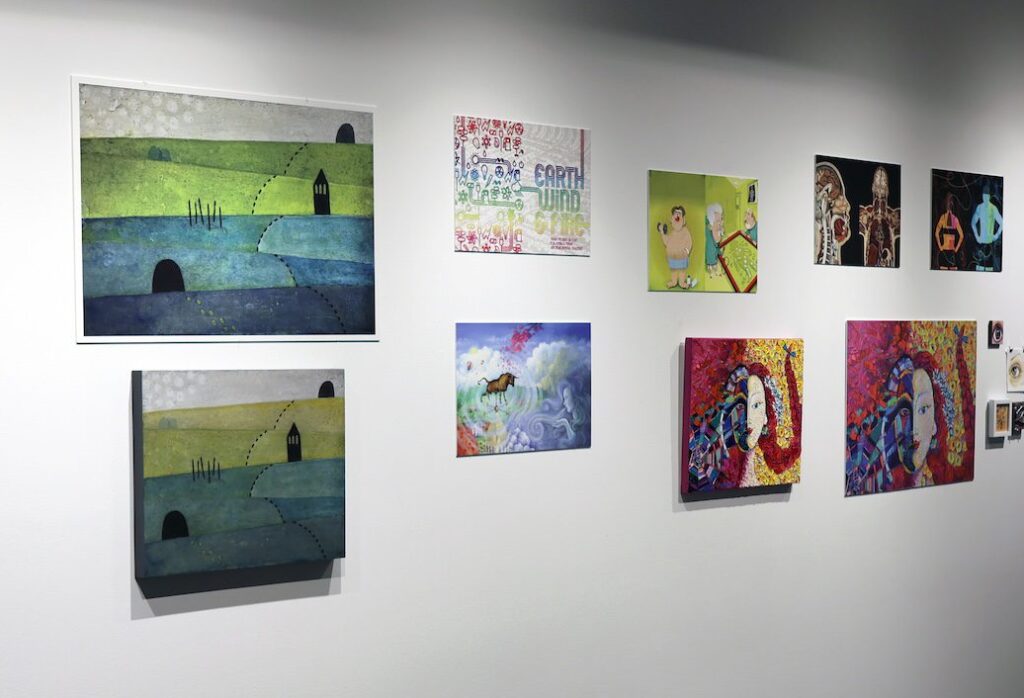
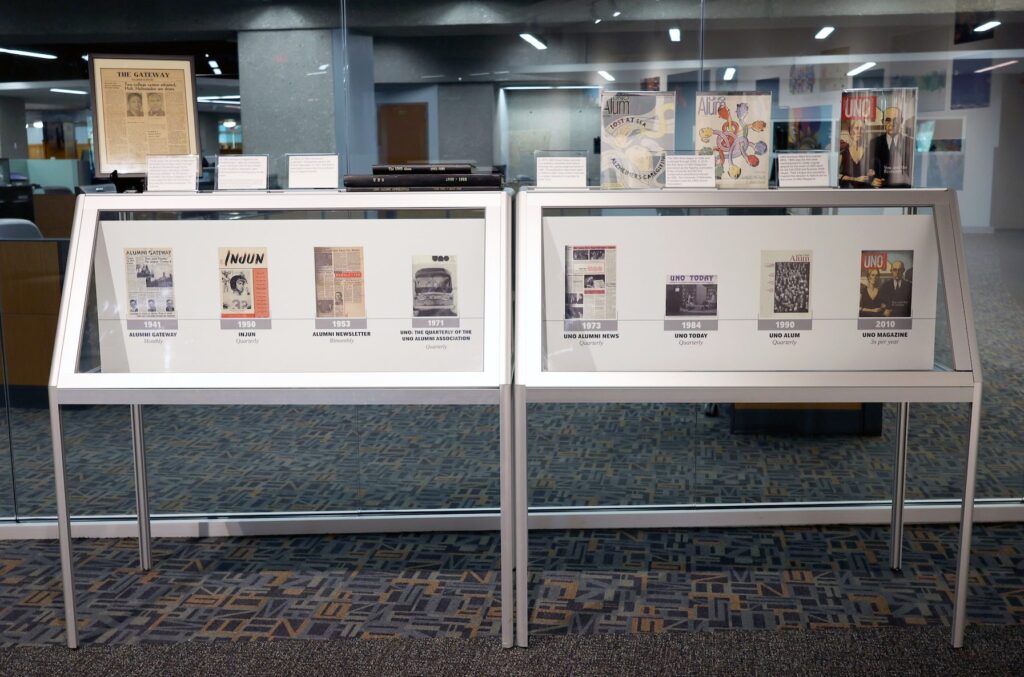
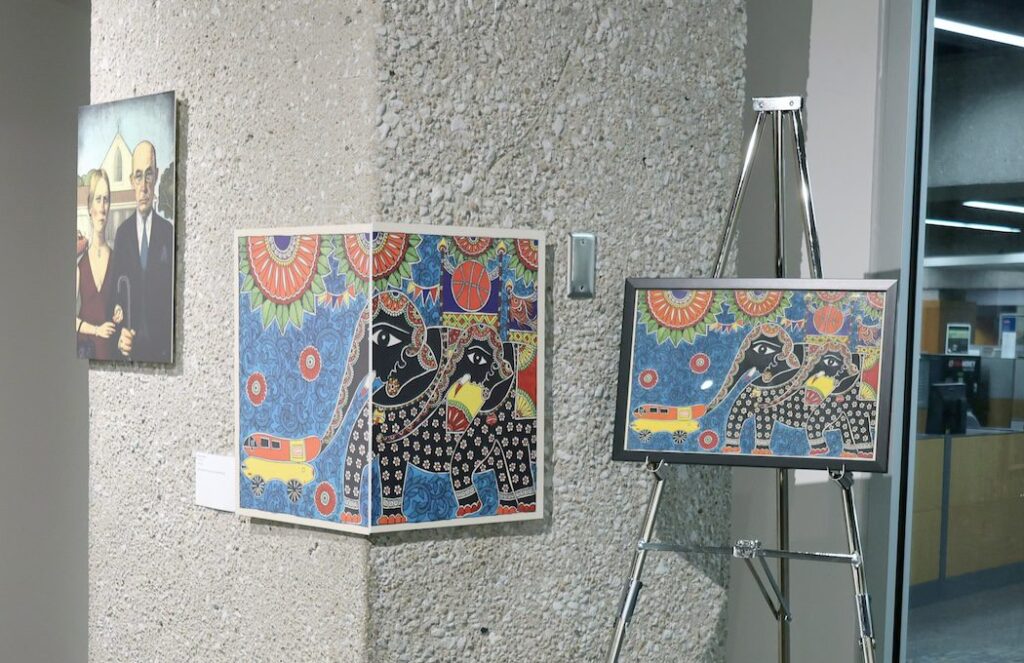
UNO transforms and improves the quality of life locally, nationally and globally
by Karen Weber
Community engagement is embedded in the DNA of the University of Nebraska at Omaha (UNO). That’s the assessment of Julie Dierberger, Ph.D., UNO’s chief engagement officer and Paul Sather distinguished director of the UNO Service Learning Academy. Dierberger began her service as chief engagement officer in January 2024 upon the retirement of the first chief engagement officer, Sara Woods, MPA. Dierberger has served as the Service Learning Academy director since 2017.
Established in 2022, the Office of Engagement provides strategy, support and direction for campus-wide community engagement and oversees the Service Learning Academy, Volunteer and Civic Engagement Programs and the Barbara Weitz Community Engagement Center. In 2024, the leadership team reorganized, adding two Associate Directors – Rosey Higgs, MSW, Associate Director of the Service Learning Academy, and Jason Jones, Associate Director of the Office of Engagement.
This year also marks the 10th anniversary of the Barbara Weitz Community Engagement Center (CEC). The CEC is a hub for collaboration among students, faculty and community partners. Located in the heart of the Dodge campus, the 70,000-square-foot building serves as a destination for campus and community partnerships. In this unique space, UNO brings the public to campus for community events that support public good and community engagement. This open door to the campus has increased community awareness of all the university has to offer, and similarly, what the university can learn from the community.
Dierberger said, “The CEC is a visible testament to UNO’s metropolitan mission.”
“Community engagement is in our bones in how we do what we do,” Dierberger said. “At every turn, we teach and learn in an intentional, community-based way.”
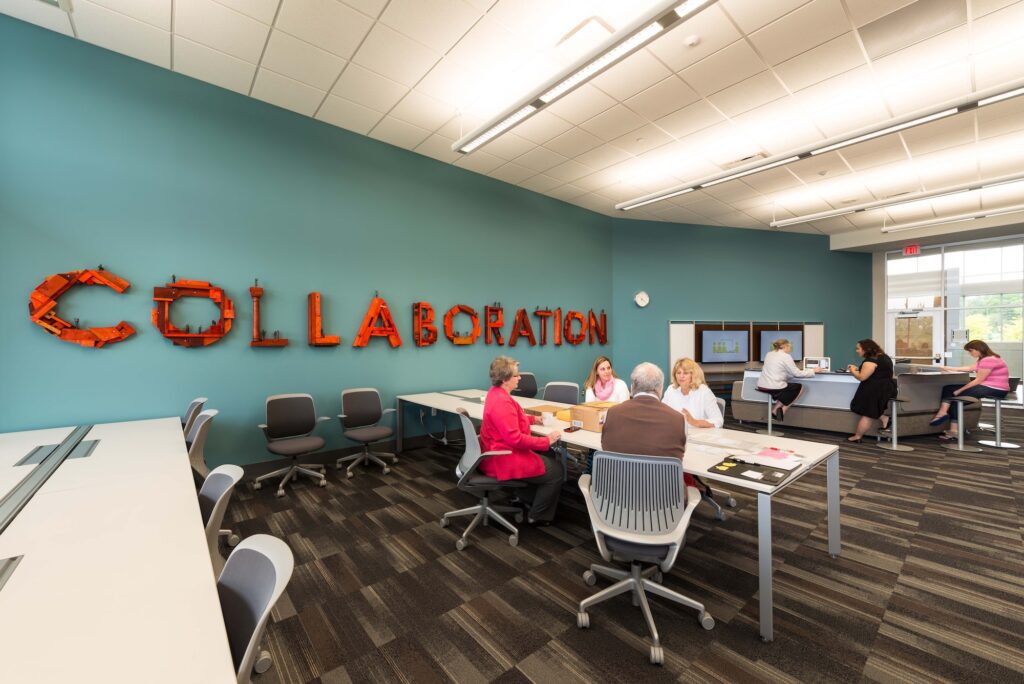
UNO’s commitment to community engagement spans decades, encompassing diverse initiatives from service-learning classes to voter engagement efforts. Robyn Loos, MA, highlights the transformative power of these experiences, recalling her own journey from student to advocate within UNO’s Office of Engagement.
She said it opened her eyes to the value of engagement experiences as a student. In her role, she has witnessed firsthand how students, faculty and community partners make mutually beneficial connections.
“These connections with the community come not just through service learning, but the full spectrum of engaged research, creative activity, teaching, learning and community service,” said Loos.
The Office of Engagement also connects faculty with community partners to help students gain resume-building skills and experiences.
“This gives students opportunities to network and develop relationships,” Loos said. “These hands-on experiences can lead to becoming more engaged and productive members of society.”
Looking back, the vision for the CEC emerged over twenty-five years ago, championed by UNO administrators who envisioned a space where innovative partnerships benefit the community and campus.
BJ Reed, Ph.D., former senior vice chancellor for student and academic affairs, is one of many individuals who worked to develop the precursor of the CEC at 49th and Farnam Street. The facility housed several nonprofits.
Reed said the creation of the CEC also ties back to the Service Learning Academy and the support of Barbara Weitz, then a member of the UNO Grace Abbott School of Social Work faculty.
“The CEC was the culmination of putting engagement with nonprofits and community engagement with students conceptually in one place,” Reed said. “It was radical at the time – nothing like it had been created on a college campus.”
Reed indicated how important administrative support was to innovative ideas like the CEC. He credits former UNO Chancellor John Christensen, Ph.D., who shared his commitment to the community for prioritizing these efforts at UNO. Christensen, a former dean of the College of Education and vice chancellor, asked Reed to be his executive assistant to focus on community engagement.
“We worked jointly on various engaged activities. John and I also went to visit potential donors about their support for the concept. Without John’s support, I doubt it would have happened,” said Reed.
Woods said Christensen, Reed and Paul Sather, former Service Learning Academy director, and many others, were instrumental in seeing the value of a central location for community engagement – not only a home for the Service Learning Academy but other programs that foster the collaboration between the university and community.
The CEC became a reality due to the generosity of private donors such as the Weitz Family Foundation, William and Ruth Scott Family Foundation, Omaha Public Power District (OPPD), Union Pacific and others.
Both Woods and Dierberger say the Office of Engagement and the CEC demonstrate the value of community engagement at every level and will continue to offer opportunities for growth in outreach. They credit administrators, stakeholders and donors for envisioning the possibilities and impact the CEC has brought to UNO, the Omaha metro and beyond.
“The donors took a chance on us,” Woods said. “I take much pride in this collaboration and have no doubt engagement in all its forms will continue to thrive in years to come.”
As UNO celebrates milestones, the legacy of community engagement remains central to its identity, driving impactful initiatives that shape the future of education and service.
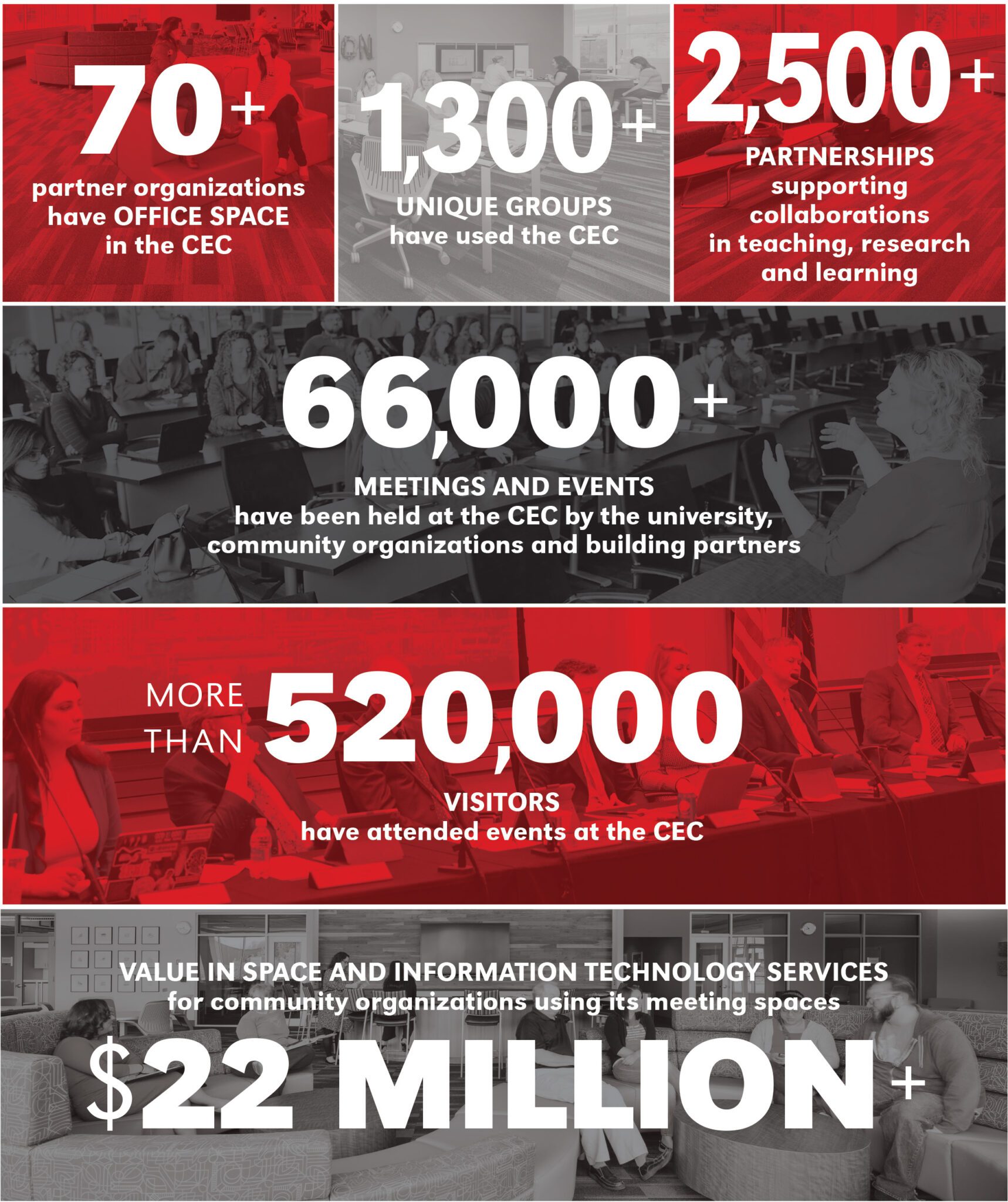
by Jackie Ostrowicki, Assistant Vice President, External Relations and Director of Marketing, Brand and Digital Media, University of Nebraska System
On July 1, 2024, Jeffrey P. Gold, M.D. began his term as the University of Nebraska System’s ninth president. A first-generation college student, heart surgeon and longtime college administrator, Gold is no stranger to our university.
For the last decade, he has led the University of Nebraska Medical Center through a period of record growth. Along with serving as UNMC chancellor and chair of the board of UNMC’s clinical partner, Nebraska Medicine, Gold assumed executive vice president and provost duties in 2021, becoming the university system’s chief academic officer. And, from 2017 to 2021, Gold concurrently held the role of University of Nebraska at Omaha chancellor, leading the state’s metropolitan university.
You might say that Gold is comfortable wearing many different hats.
Born in Manhattan, he is a product of the New York City public school system. He grew up in humble circumstances and attended Cornell University on scholarships, graduating with a degree in engineering.
He met his wife, Dr. Robin Hayworth, while they were both in college. Gold and Hayworth wed before attending medical school together at the Weill Cornell College of Medicine; they are celebrating 50 years together this summer.
Gold completed his general surgery residency at The New York–Presbyterian Hospital and Memorial Sloan Kettering Cancer Center, where he later served as the administrative chief resident. He completed his cardiothoracic surgical fellowship training at the Brigham and Women’s Hospital in Boston with additional training in pediatric cardiac surgery at the Boston Children’s Hospital, both of Harvard Medical School.
After completing his medical training, Gold served in academic and clinical leadership roles at the Weill Cornell College of Medicine and New York Presbyterian Medical Center. He taught as a professor and was division chief of children’s cardiac surgery, where he was an active academic cardiac surgeon. He also served at the Albert Einstein College of Medicine as professor, department chair and heart center director.
On 9/11, Gold was asked to join the trauma team working at Ground Zero. “I remember being able to reach up and hold the air in my very hand,” he reminisced. The experience brought home that life is fleeting; Gold decided that making
a difference would be his legacy.
He began by moving to Ohio to become chancellor of the University of Toledo’s academic and clinical health sciences, where he led five colleges and graduate studies. His next stop would be Nebraska.
Gold likes to say that he is a Nebraskan not by birth, but by choice.
He has put his time in Nebraska to good use, transforming UNMC through high-impact facilities and initiatives. He brought together Nebraska Medicine and UNMC under a single governance structure; grew UNMC research grants and contracts from $89 million to $250 million; raised over $800 million in private philanthropy; and expanded programming across rural and urban Nebraska.
“I really began to appreciate the breadth and depth of our 500-mile-wide campus,” he said.
His time as chancellor of UNO focused on supporting students and elevating community partnerships and engagement – both core to UNO’s mission and values. “The really great universities of our country all have large, successful urban campuses,” Gold said.
As he recruited faculty and grew UNO’s research portfolio, Gold also strengthened and grew UNO/UNMC collaboration. Examples include UNO’s Biomechanics Research Building and the Urban Health Opportunities Program (UHOP), which provides a direct pipeline to medical school at UNMC for students who want to provide healthcare to underrepresented communities.
At both UNO and UNMC – and now, at the University of Nebraska System – Gold focused on partnerships and on people. “Surround yourself with the very best people, make sure they have the resources they need, and stay out of their way. That is how great things happen,” he said.
“Whether faculty, staff, students or community partners, it’s important to work together to create excellence and to face challenges. The way we treat one another underscores our success.”
Collaboration and transparency are important values to Gold. A servant leader, he is focused on listening and learning as he continues to build trust and relationships.
Gold is excited about the journey ahead. “I believe that great things are in store. Every tool we need is already in the tool chest,” he said. As he looks toward the future, he believes there is immense opportunity:
“We all want to see a thriving University of Nebraska that every young person dreams of attending – a university poised to change the world.”
NEW DEANS
New Deans Look Back and Look Forward
Like Gold, UNO’s four newest deans were all promoted from within. Together, they have a combined 85 years of experience at and service to the university. We asked each of them: What are you most proud of during your time at UNO and what is your vision for the future?
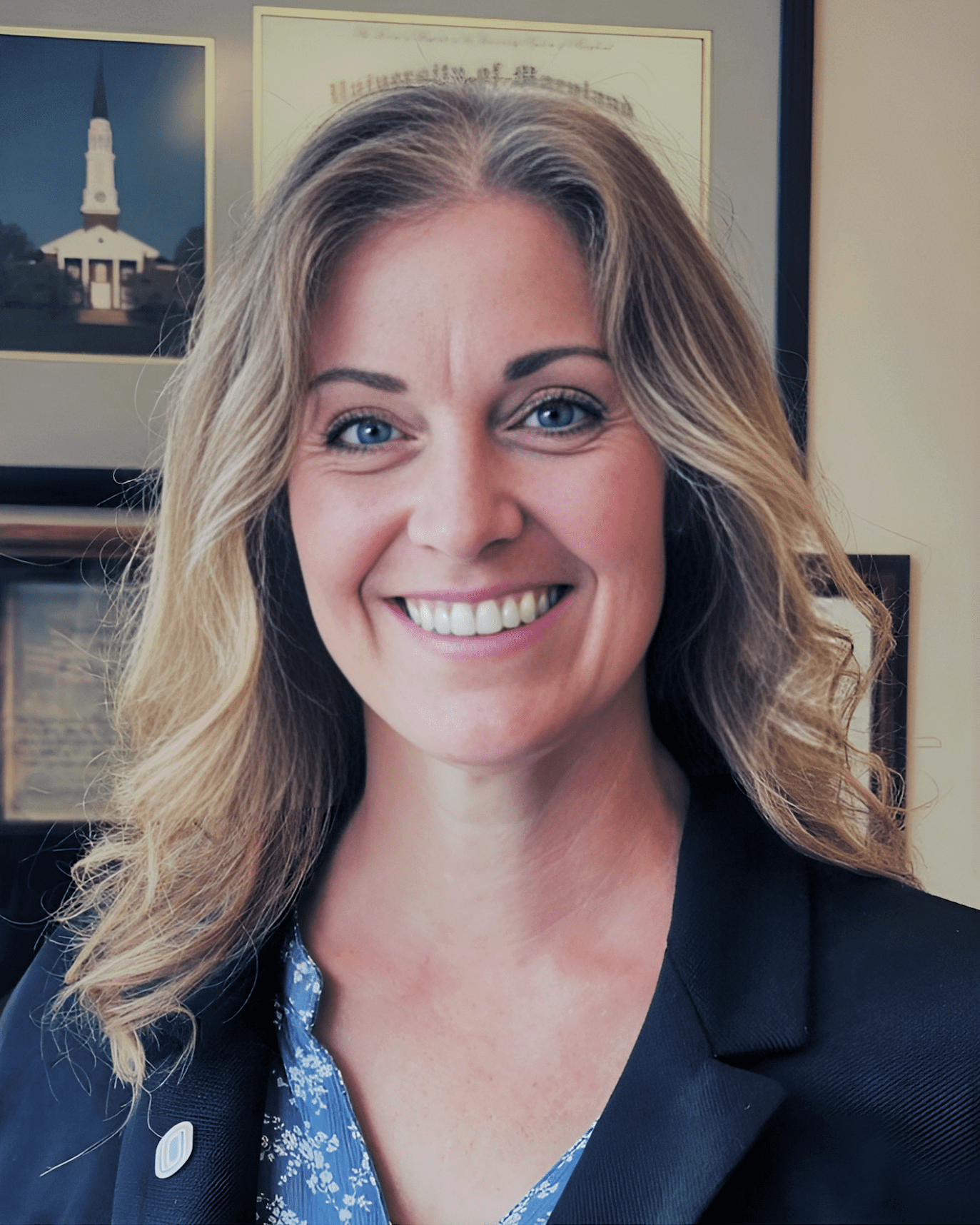
Gaylene Armstrong, Ph.D.
Dean of the College of Public Affairs and Community Service
LOOKING BACK
I am most proud of our success in developing a vibrant faculty and student culture. This collective strength has fostered nationally-ranked academic excellence, increased our community-engaged research portfolio by over $12 million, and strengthened partnerships with agencies and nonprofits organizations across Nebraska – in turn, creating student opportunities that are unparalleled in the nation.
LOOKING FORWARD
I most welcome this leadership opportunity to elevate and optimize our community collaborations locally and globally to the benefit of Nebraska. Growing a dynamic, inspirational and talented faculty will help attract, develop and graduate students who will be foundational in generating solutions to the complex challenges and social issues. Key to success will be the integration of emerging technology, expansion of our research portfolio and nationally ranked academic programs.
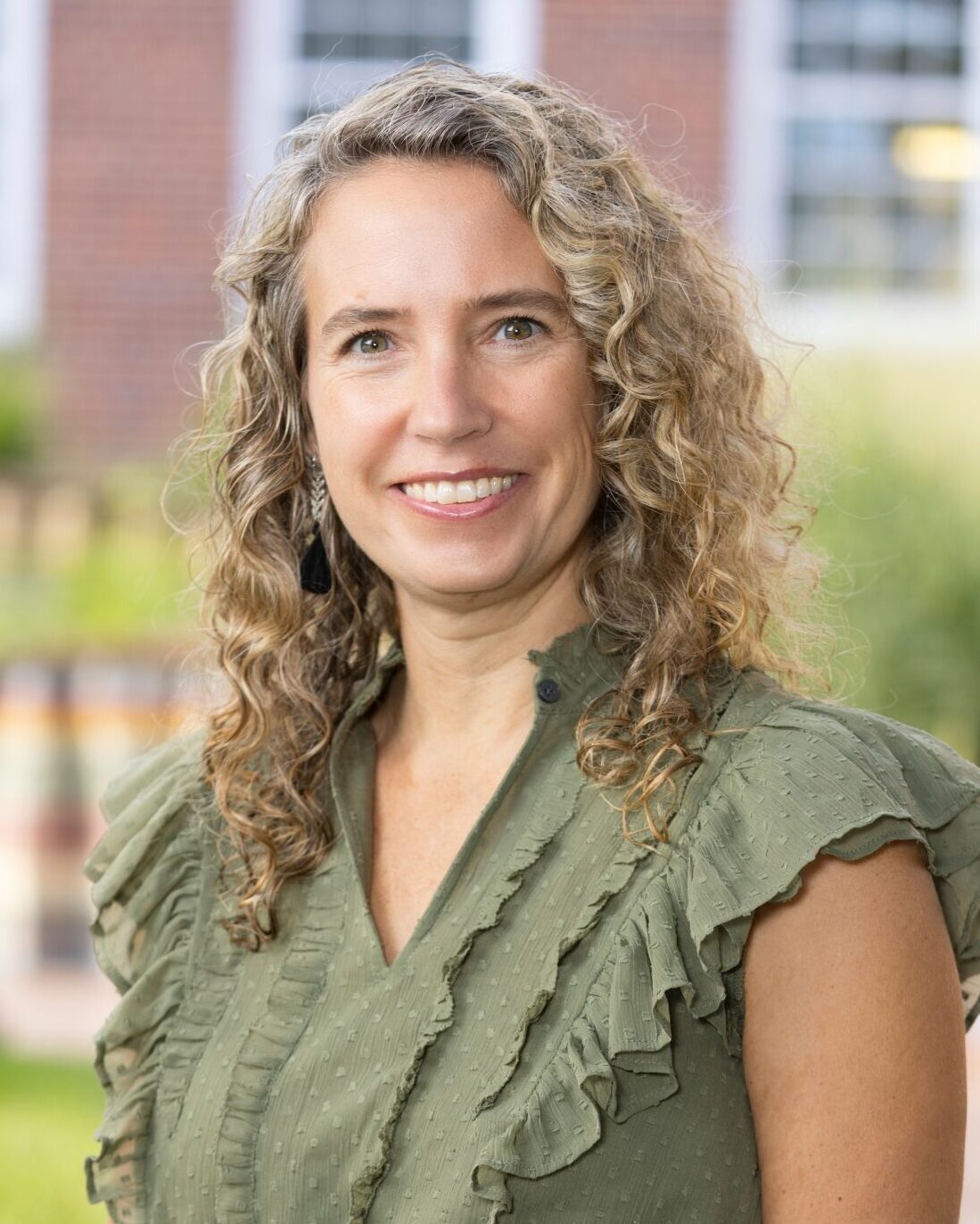
Melanie Bloom, Ph.D.
Dean of the College of Arts and Sciences
LOOKING BACK
The work that we have done to recruit and retain talented students in the College of Arts and Sciences is extremely impactful. I have had the privilege of developing several scholarship programs to support new and returning students in the college. Through my involvement in these programs, I have developed a better understanding of our students’ struggles but also their strengths. Witnessing their journeys at UNO and celebrating their successes is one of the most rewarding parts of my job.
LOOKING FORWARD
The sky’s is the limit for UNO’s College of Arts and Sciences. My vision for the future includes increasing support for our students, financially, academically and social-emotionally. I also hope to elevate the amazing work being done by our faculty. This includes promoting the impact of their teaching and research in the UNO community and beyond. Finally, I hope to develop a stronger alumni network to ensure that students’ relationships with college endure beyond their time with us.
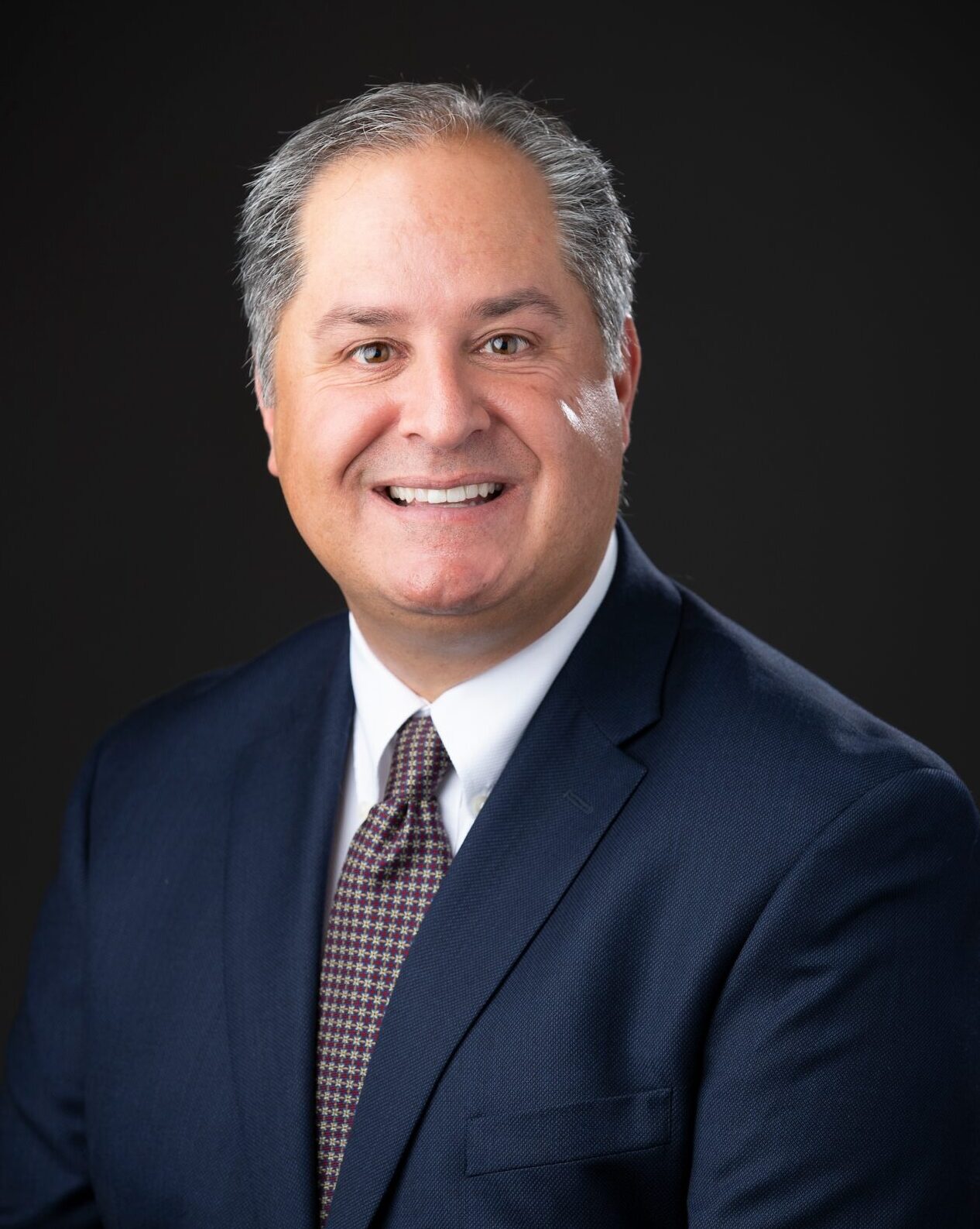
Juan Casas, Ph.D.
Dean of Graduate Studies
LOOKING BACK
I am a firm believer in the transformative ability of education. UNO offers a wide selection of graduate programs with world-class faculty that provide students with the training they need to find good jobs. Our graduates are well-positioned to confront the challenges and embrace opportunities of a rapidly changing world. Moreover, they also add creatively to our culture across different artistic mediums. I am incredibly proud that we have set enrollment records for two of the last three years and have grown the number of underrepresented students pursuing graduate education.
LOOKING FORWARD
This is an exciting time to be in higher education and graduate education in particular. The future will continue to be about meeting students where they’re at and offering the programming they need to be successful while meeting the workforce needs of the state, region and country. Flexible micro-credentials, certificates and degrees provide the options for training, upskilling and reskilling students need. I look forward to continuing to elevate and celebrate the work of our students and faculty. I am incredibly proud and humbled to be a part of the collective teamwork and professionalism exhibited by the Office of Graduate Studies staff, UNO administration, College Deans, faculty, and staff in service of our students, alumni and their lifelong learning needs.
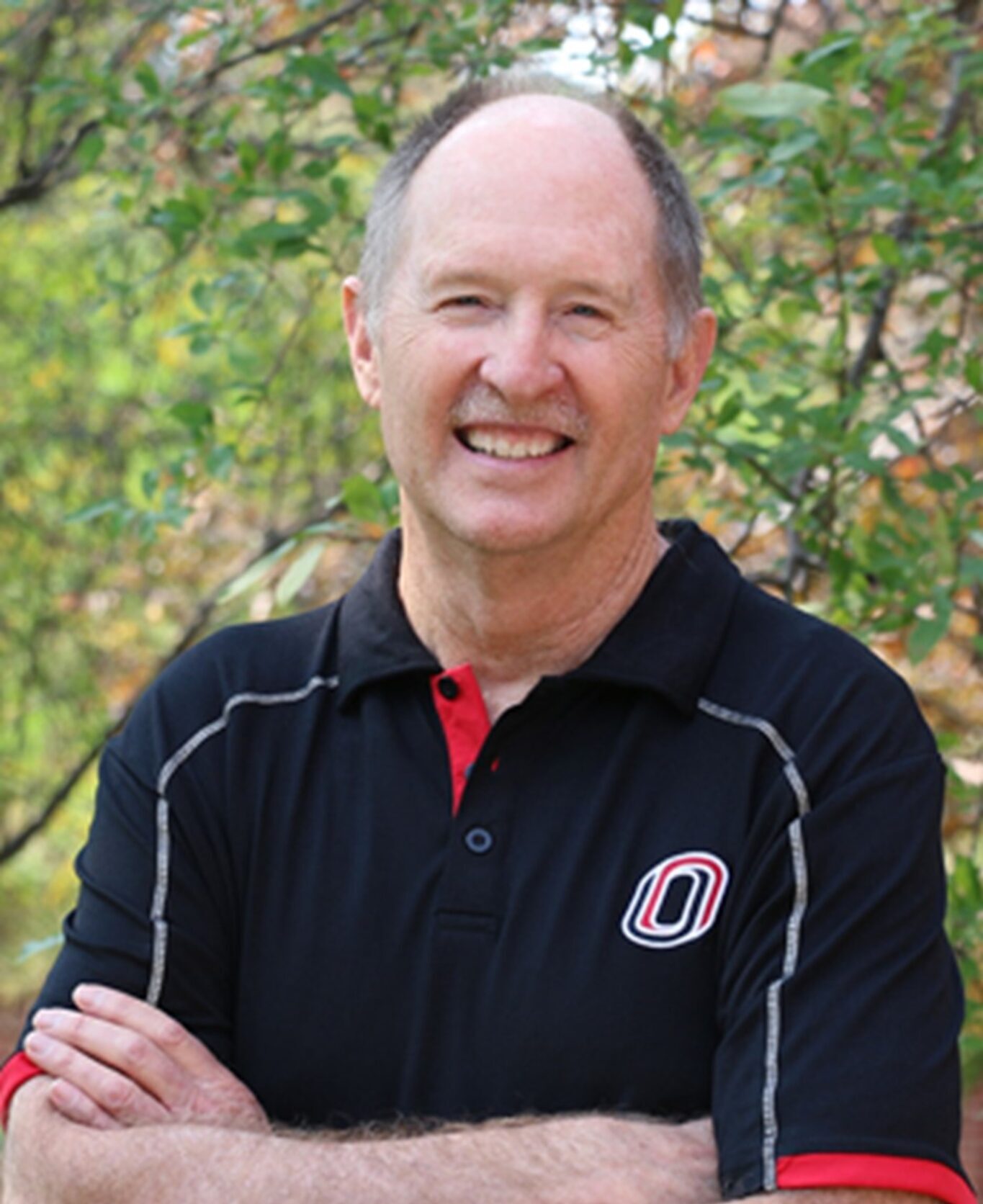
Neal Grandgenett, Ph.D.
Dean of the College of Education, Health, and Human Services
LOOKING BACK
I am perhaps most proud of my collaborative work in STEM Education that contributed to many UNO National Science Foundation grants, and that helped us to become a national leader in STEM and to my appointment on NSF’s Advisory Board for the Improvement of Undergraduate STEM Education.
LOOKING FORWARD
My vision builds upon that collective journey and strives to support our amazing faculty and staff in their many shared innovations for our students, while also facilitating that excellence that we can only accomplish together.
Add Your Heading Text Here
Students, faculty and alumni impact the world through knowledge sharing and cross-cultural collaboration
by Lucy Morrison, Director, University Honors Program; Director, Office of National Scholarships and Fellowships; and Professor of English, University of Nebraska at Omaha
UNO is proud to be Omaha’s Metropolitan University, educating people of the world. It is also proud to have students and scholars engaged in exploring the world through the Fulbright program, the United States’ largest cultural exchange program.
Initiated in 1946 by Senator J. William Fulbright, the program offers students, faculty and creative individuals opportunities to share their research and teaching talents in over 135 countries. International scholars and students can also come to the U.S. to contribute their skills. UNO has celebrated such efforts since the 1950s as Fulbright recipients have continued to share their knowledge and insights gained overseas with our Mavericks here in Omaha.
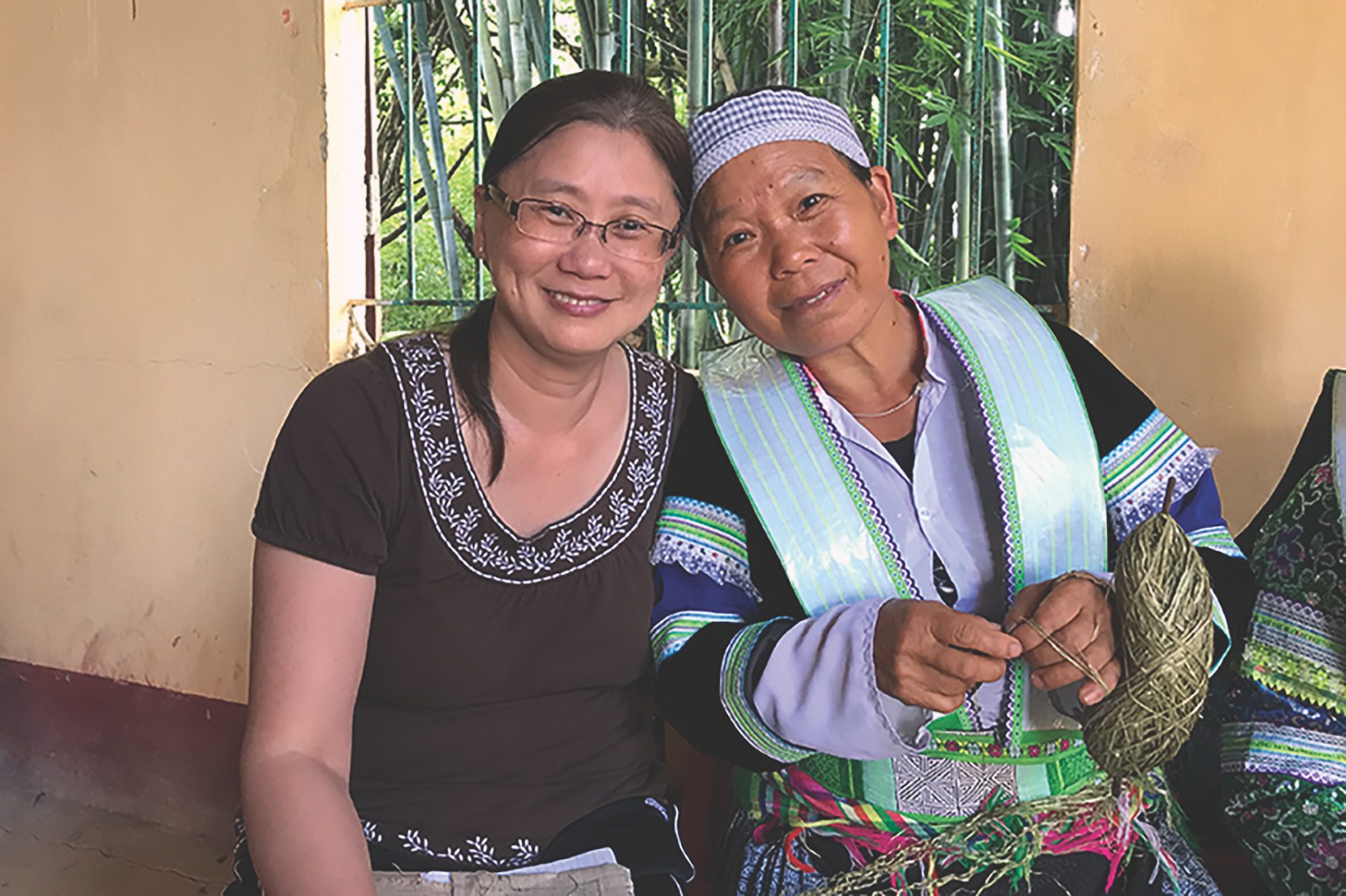
The program’s influence resonates deeply within UNO’s academic community. Cathy Co, Ph.D. was a Fulbrighter in Vietnam 2014-15. Co was primarily there to teach but gained much more from the international experience.
“A serendipitous encounter with four groups of women from Cao Bang province proved to be the most professionally and personally rewarding,” said Co.
A College of Business Administration professor, Dr. Co returned to UNO and implemented a new multi-disciplinary experiential learning course on microenterprise development, in which students learn about these international business efforts.
Last year, Dr. Co was a Fulbright specialist at International School—Thai Nguyen University, and she expects more opportunities for UNO student learning to develop from that experience in the coming years. Her journey exemplifies how Fulbright not only enriches individuals but also fosters innovative learning opportunities for future Mavericks.
Similarly, Dr. Deepak Khazanchi from UNO’s College of Information Science & Technology has left a global imprint as a Fulbright specialist in Norway (2014), Japan (2023), and a professor in Austria (2022). His commitment to international collaboration underscores UNO’s dedication to globalizing education and research.
“As a global citizen, I have always been inspired by and love to experience other cultures. This also has allowed me to collaborate with researchers from around the world in my discipline and research questions that are uniquely situated,” said Khazanchi.
He says Fulbright puts UNO’s programs and research on global maps.
“Fulbright Scholars can be key to internationalizing their campuses upon return because they can foster greater peer and student interest in global engagement and also encourage their colleagues to get the same experiences,” said Khazanchi.
UNO students have a long track record of achieving Fulbright recognition as well, with costs for their year abroad borne by the Fulbright program. Tyler Ayres, a recent graduate with a master’s in critical and creative thinking, eagerly anticipates his upcoming role teaching English in Taiwan. For Ayres, Fulbright represents more than language immersion – it’s a gateway to embracing Taiwan’s vibrant culture and educational landscape.

“I applied to the Fulbright Program mainly to grow as an educator and Mandarin speaker, though I’m also drawn to Taiwan’s food culture, miles of coastline, political legacy, night markets, vibrant democracy, colorful history, lack of snow and so many other aspects,” said Ayres.
Courtney Brink, who graduated in May 2024 with a degree in Early Childhood Inclusive Education and a minor in German, has already spent significant time in classrooms. Her experience at UNO, enriched by the Honors Program and Teacher Scholars Academy, has prepared her to make a meaningful impact in German classrooms.
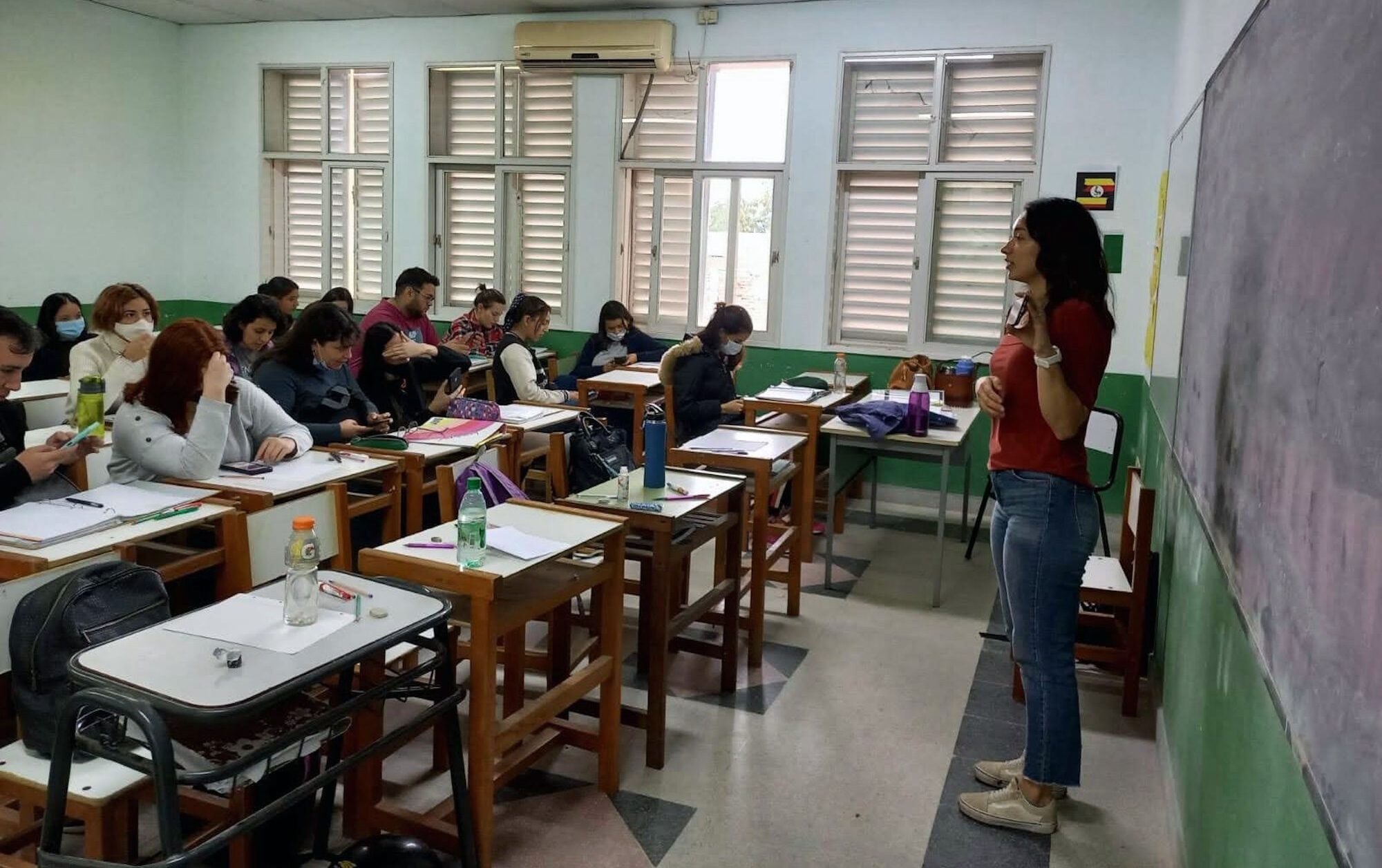
Annabelle Abisset, who earned undergraduate degrees in international studies and Spanish before completing her master’s in public administration at UNO in 2021, now serves as Partnerships Coordinator at Kiewit Luminarium. She credits her Fulbright experience in Argentina for shaping her professional journey.
“The Fulbright program, with its emphasis on side projects and community involvement, aligned perfectly with my interests and expertise, making it an ideal opportunity,” said Abisset.
The violin player said the most unexpected benefit was how deeply she connected with her community through music.
“While the musical experiences were enriching, the most enduring and memorable aspects were inviting students and new friends to concerts as well as the deeper friendships I formed with fellow musicians; those continue to this day,” said Abisset.
She hopes other students feel inspired through the Fulbright program to bring their talents and passions to corners of the world they never imagined.
With her UNO undergraduate degree in international studies along with her European master’s degree in tourism management, Goodricher Amber Johnson will be teaching humanities in Baia Mare, Romania this fall. There, she will also organize a creative tourism project with a local museum as part of her Fulbright grant.
“My passion for global exposure was further inspired by other UNO students,” said Johnson. “My heart for the world and for experiencing the gifts and diversity it can bring us was fostered at UNO and uplifted.”
Such passion is typical of Mavericks chosen and recognized nationally for their achievements and the gifts they share globally through Fulbright efforts. They venture out into a wide world and make it better by bringing pieces of it back to Omaha.
_______________________________________
Interested in participating in the Fulbright Scholars program? Connect with UNO’s Office of National Scholarships and Fellowships to learn more.
by Juli Oberlander
After 50 years in radio, Otis Twelve is retiring from KVNO this fall, leaving a legacy as a beloved Morning Classics host and champion for the arts.
Known for his wit, charisma and iconic radio voice, Otis grew up imitating radio personalities such as Dizzy Dean and Stan Freberg. Aside from playing for the New York Yankees (and a short-lived goal of entering the priesthood), Otis says his dream as a boy in Kansas City was to become a baseball play-by-play announcer like Dizzy Dean.
“Baseball was my thing, and I loved radio,” Otis says. “I was always pretending to be on the radio.”
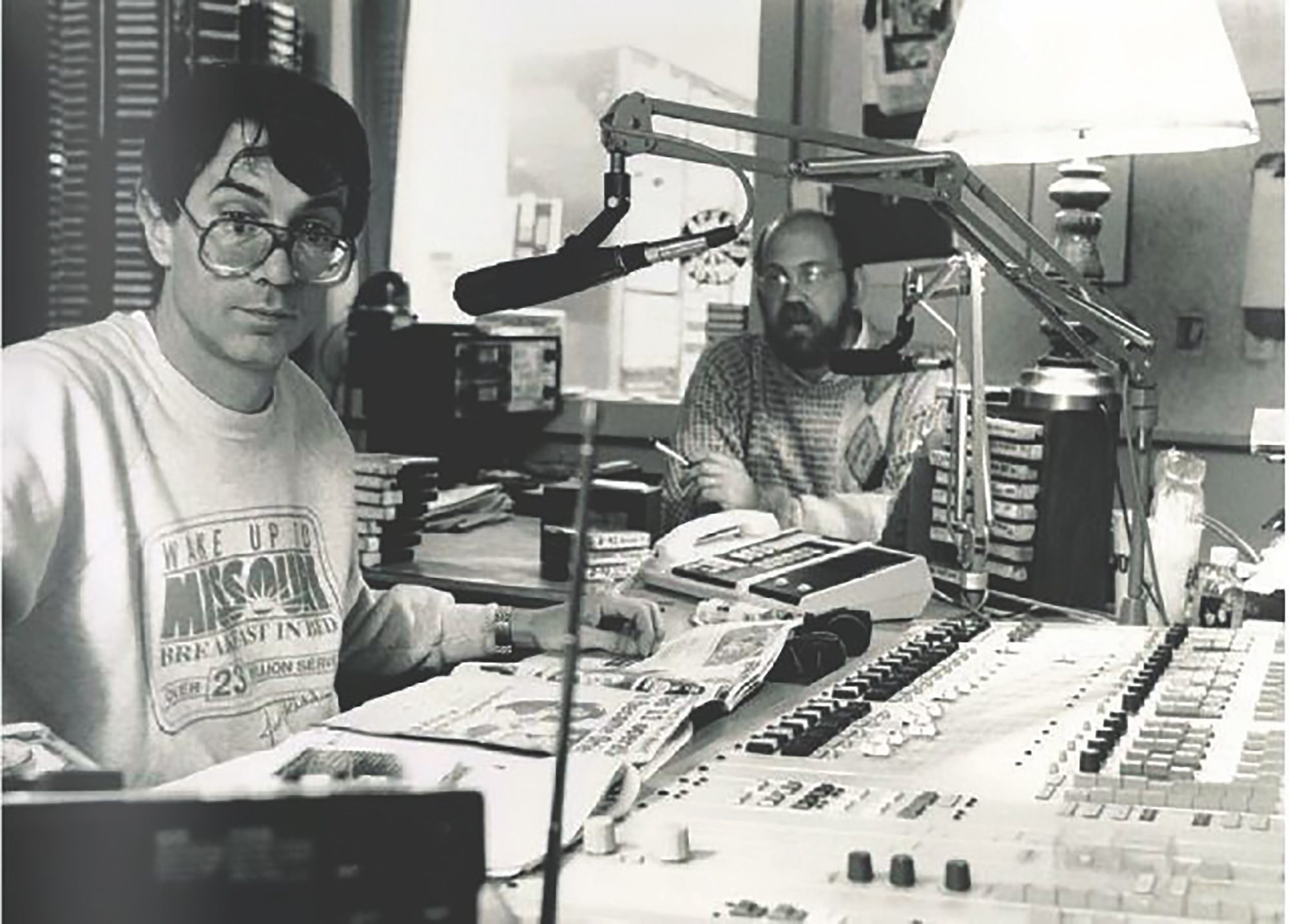
In the mid-1960s, Otis attended Creighton University, where he hosted a student radio show, “Revolution,” on KOCU with fellow student Diver Dan Doomey. After college, Otis started a band, The Ogden Edsl Band, and toured the country. He and his bandmates were semi-regulars on KROC in Los Angeles and KSAN in San Francisco.
After 9 years, Otis left his band, moved back to Omaha and reconnected with Diver Dan. The pair started hosting “Midnight Mondo” for KQKQ (98.5) in 1973 along with performing in Omaha comedy clubs. At one of their shows, a local radio executive recruited them for a morning program on Z-92 (KEZO).
“We just did our thing,” Otis says, “this kind of rock n’ roll, vaudeville act that became a radio career totally by accident. It’s all serendipity, and it’s also hereditary because I have this voice. The only thing I did to help that was whiskey and cigarettes.”
Born as Douglas Wesselmann, he says he became “Otis Twelve” because he needed a better show-business name. Otis, his high school nickname, was the obvious choice, and “Twelve” was a nod to Gil McDougald, No. 12 for the Yankees.
“It was just a tag,” Otis says, “and then the tag really worked well.”
After leading Z-92 to new heights, Otis hosted morning shows at KFAB in 1993 and KKCD in 1994 before becoming a talk show host on KKAR from 1999 to 2001. He was also a movie critic for KETV and KPTM from 1984 to 1996, incorporating his unique style of humor into each role.
As the KVNO morning host, Otis says he strives to make classical music accessible for people.
“Music is music,” he says. “Franz Liszt had groupies. It’s just music, and I wanted to make it friendly for people. I tried to do my whole show that way, and I think that’s worked.”
Throughout his career, Otis says he has learned not to take himself too seriously.
He says he has shared this advice with his successor, current Wednesday host of Morning Classics Jeff Koterba.
“It’s radio,” Otis says. “Nobody dies.”
In his new role as morning host, Koterba says Otis’ mentorship will continue to impact him, although he wants to lead with his own organic approach. Koterba’s plan is to gauge listeners’ feedback while expanding on offerings such as KVNO’s Arts Today features, Dish Omaha and the “Jeff Around Town” Friday segments. KVNO will also hold its “Otis Twelve Days of Christmas” campaign one last time this December.
“I don’t expect there to be some major shift,” Koterba says, “but to keep doing what KVNO does best, to be me and to find fun ways through the arts and music to connect with Omahans.”
A longtime friend and admirer of Otis’, Koterba says Otis is an icon and legend due to his storytelling abilities, as reflected by his 2023 induction into the Nebraska Broadcasters Association Hall of Fame.
“He tells stories with humanity,” Koterba says. “People respond to that.”
Sherry Brownrigg, KVNO general manager, says Otis is like the face of KVNO. For listeners, Otis brings assurance that everything will be OK.
Brownrigg says he provides that sense of comfort in her own life, as well. While Otis’ departure will be an end of an era, she hopes Omahans will remain attached to KVNO.
“We’ll do our best to keep everybody’s trust in us,” Brownrigg says, “and continue to bring just great, uplifting classical music — and not take ourselves too seriously.”
Leading up to Otis’ last day on Oct. 4, the KVNO team is planning fun events, tributes and surprises that will give Omahans the opportunity to celebrate his career, culminating in KVNO’s fall pledge drive.
On Otis’ last day, Brownrigg says she plans to be in the booth with him.
While she knows that day will be emotional, Brownrigg says she expects Otis will return as a guest host sometime in the future.

“He loves communicating with people,” she says. “That’s just so much a part of who he is.”
In his retirement, Otis says he plans to sleep in until 6:00 a.m. His dream of becoming a baseball play-by-play announcer is also still very much alive.
Additionally, Otis looks forward to spending time with his family and traveling with Debbie, his wife of 47 years whom he affectionately calls “Dagmar.” A published author and freelance writer, Otis says he also wants to write more books.
“I want to rewrite Faust,” he says. “How pretentious is that? I want to do a thrilling, scary novel about Faust. It’s a fascinating story.”
Over his 18 years with KVNO, Otis says he has enjoyed working with the staff and connecting with the community.
His career highlights include narrating for the Omaha Symphony, holding a Stradivarius violin and meeting artists like Joshua Bell, who Otis says is “Jimi Hendrix in his own way.” Additional noteworthy moments involve working with Omaha Symphony conductors Bruce Hangen and Thomas Wilkins, and encountering celebrities such as Paul Newman, Ray Bradbury and Dennis Hopper.
Perhaps above all, Otis says KVNO’s listener support has impacted him personally and professionally. In times of economic plenty and scarcity, he has been inspired by Omahans’ dedication to keeping KVNO alive as a public-funded radio station.
“There were so many great people along the way,” Otis says. “That’s really the highlight. It’s the people. I’m just really lucky.”
Help us honor an Omaha legend!
Otis Twelve’s final broadcast will take place on October 4th, 2024, and KVNO will be honoring him over the next two months with special events on and off the air. Share a memory or message for Otis.
From UNO Scott Scholars to UNMC Scott Scholars
by Connie White
University of Nebraska at Omaha graduate Ryan Chapman ’22 wants to help others, so he hopes someday to be an internal medicine physician or study infectious diseases.
Heather Richard ’22 feels drawn to pediatric hematology and oncology because she loves working with children.
Nour Elrokhsi ’23 is exploring a career as a primary care physician because she has personally witnessed how health care can change lives.
Chapman, Richard and Elrokhsi, all from the Omaha area, are medical students at the University of Nebraska Medical Center. All three say their interest in health care stems from a desire to make a difference in the world. And all three credit the Scott Scholars Program with providing mentorship and support to inspire their future health care careers.
The Suzanne & Walter Scott Foundation pledged $23 million to sustain and grow the prestigious Scott Scholars Program at UNO, where it was established by the late Omaha philanthropist Walter Scott, Jr. The gift commitment also supports an expansion of the program to UNMC, where 12 Scott Scholars began their first year of medical school in fall 2023.
Chapman, Richard and Elrokhsi all are graduates of the UNO Scott Scholars Program, launched in 1997 to help keep high-achieving STEM students in Nebraska. The three also are members of the inaugural class of Scott Scholars at UNMC.
HERE ARE THEIR STORIES:
Ryan Chapman
Chapman, a Skutt Catholic High School graduate, said that when he arrived at UNO, he originally planned to become a computer programmer. However, despite having a good experience working as a computer scientist while interning at a local company, he decided he wanted a career where he could make a more personal impact.
That fall, he enrolled in more science courses and volunteered for the Omaha VA Medical Center.
“I decided that I wanted a job where I’m able to directly work with and help other people,” he said. “I think the Scott Scholars Program helped me to think about it.”
He said his path to medical school was a direct result of leadership classes he took in the Scott Scholars Program, along with the mentorship of Harnoor Dhaliwal, Ph.D., and Wayne Watkins, the leaders of the program.
“The Scott Scholars Program has challenged me to think beyond what I imagined for myself and encouraged me to find a career where I can impact the lives of others,” Chapman said. “I know UNMC will train me to be a great physician.”
Heather Richard
Richard, a Bellevue West High School graduate, was able to foster her long-time interest in science and the human body through volunteer opportunities and clinical experiences at UNO, which allowed her to set the goal to become a physician.
“I have a profound desire to make an impact on patients’ lives,” Richard said.
She said the Scott Scholars Program provided her with a sense of community and made her UNO undergraduate experience enjoyable. Growing up, she was shy and introverted. The program’s leaders helped her step out of her shell and develop communication skills and grow her confidence. She also learned that there are different kinds of leaders.
“You can be a leader even if you’re more quiet and more introverted,” Richard said.
She recalled meeting Walter Scott, Jr., during a reception while a UNO student.
“I remember he treated us with kindness and with so much respect,” she said. “We were a part of his community and his family, in a way.”
After she finishes her training, Richard said, she hopes to practice medicine in Nebraska.
“My family is here,” she said. “I want to be involved in this community and serve Nebraska.”
Nour Elrokhsi
Elrokhsi, who graduated from Millard North High School, said she always knew she wanted to work in health care. Her parents are physicians, so she learned early on the power of health care to change lives.
“Medicine has been something I’ve been around my whole life,” she said.
Through the Scott Scholars Program, she worked with the Munroe-Meyer Institute to propose design ideas for its dental clinic. Working with a team of students that included Richard, the group offered ideas to make neurodivergent patients more comfortable, including adjustments to lighting, images on the projector screens, and even the texture on the exam chairs.
Elrokhsi said primary care is an umbrella term for a host of specialties, including pediatrics, internal medicine and family medicine. She said another area of interest is psychiatry.
“I like the personal aspects of these specialties,” she said. “You get to know your patients, and they become friends.”
She is “just incredibly grateful” for the scholarship assistance she has received through the Scott Scholars Program and for the mentorship and support.
“They believe in you more than you believe in yourself,” Elrokhsi said of the program’s leaders.
She sees herself staying in Nebraska after she completes her medical school training.
“Nebraska has grown on me,” said Elrokhsi, who was born in Libya. “UNMC is an incredible institution and to be able to do my medical training here is a privilege. To continue that here would be wonderful.”
____________________
A relentless focus on student access and success is a main pillar of Only in Nebraska: A Campaign for Our University’s Future. Through this historic campaign, UNO seeks to engage 18,000 unique benefactors to raise $300 million to build the future Nebraska needs now.
Learn more: OnlyinNebraska.org/uno
by John Fey
Mike Kemp jumped into retirement with the same energy and enthusiasm he possessed while starting the UNO hockey program in 1996. First, though, he had some final matters to attend to before wrapping up his 48-year career in college athletics as a coach and administrator, including 27 years at UNO. Then, it was off to the family cabin in Wisconsin.
“I’m enjoying retirement,” Kemp said just a couple of weeks after his last official day on the job, May 31. “But I won’t be too far separated from UNO.”
Kemp will be serving in an ex-officio role as a special advisor to Adrian Dowell, who was named vice chancellor/director of athletics in November 2021.
He received an early “going away” gift when UNO announced last April the Baxter Arena ice rink will be named ‘Kemp Ice,’ which will be located around the center ice circle. Omaha Athletics plans to officially dedicate the naming and celebrate Kemp’s 27 years of leadership during the first home series of the 2024-25 hockey season.
The landscape of Omaha Athletics changed dramatically with hockey becoming the university’s first NCAA Division I sport. But it didn’t come without multiple meetings led by then-athletic director Don Leahy. Once given the green light by the NU Board of Regents to start a hockey program, the search began for a coach.
Kemp clearly recalls the interview process, knowing he might be a long-shot candidate. At the time, he was in his 14th season as an assistant coach at Wisconsin. He knew Omaha quite well from recruiting Omaha Lancers players and before that as coach of UNO’s club hockey team in 1975-76. At the time, there was talk of adding hockey as another sport, but the discussion faded due to a belief that it wouldn’t be feasible.
Fast-forward to 1996 when Kemp learned of the opening at UNO while attending the annual hockey coaches convention and decided to apply.
“I gave Don Leahy a call the first week of June and asked him some questions,” Kemp remembered. “He assured me that they were moving forward. I asked him if I was too late, and he said to go ahead and apply. I know I was the last person to interview.”
Kemp came into that interview extremely well-prepared. Years later, Leahy recounted the interview process, saying Kemp’s presentation “was flawless.” He was announced as the first Omaha Hockey coach on June 28, 1996.
The hockey program got the blessing of Connie Claussen, UNO’s first coordinator of women’s athletics, after getting the assurance that four women’s sports would be created (swimming and diving, soccer, golf and tennis) to put the university in compliance with Title IX regulations.
“We had to do a lot of work to put things together, figure out costs and how much money we would need,” she remembered. “The money would have to come from hockey.”
Kemp reflects with affection on his relationship with Claussen, who continues to serve as athletic director emerita.
“Connie Claussen served an incredibly important role during my time there,” Kemp said. “She was a voice of reason and a voice of real sense. She and Don were such a good team working together.”
Claussen quickly became a fan of Maverick Hockey and its first coach.
“Mike was always very supportive of women’s athletics,” Claussen said. “I’m excited that he can still help UNO. I will miss him very much.”
Under Kemp’s 12 years at the helm, Omaha Hockey compiled a 171-181-54 record. He took the Mavs to their first NCAA tournament in 2006, and three of his teams posted 20 or more wins.
After the 2008-09 season, newly hired athletic director Trev Alberts asked Kemp to step down as head coach and assume the role as associate athletic director. Kemp said he doesn’t regret accepting the offer.
“I was given the option to coach the last year of my contract or stay on,” he said. “At the time I was actually thinking about not coaching anymore anyway. In the long run, looking back at a career, it was an opportunity, and I thank Trev for that. It really gave me a new experience that I wouldn’t otherwise have had.”
When Alberts left UNO to become the athletic director at UNL in 2021, Dowell was hired as his replacement and quickly relied on Kemp to tutor him about Maverick hockey.
“We need hockey to be successful,” Dowell said shortly after settling in at UNO. “It’s not only good for the hockey program, it’s good for the entire athletic department. Having coach Kemp side by side – not just hockey-wise but the knowledge he has institutional-wise as well – he’s been the way everyone would expect Mike Kemp to be.”
Kemp takes pride in the post-hockey accomplishments of many players he coached. High among them is Mike Gabinet who is preparing to enter his eighth season as UNO’s head coach. The Canada native was coached by Kemp from 2000 to 2004 and considers him a second father.
“The way he conducted himself you could tell he was a caring person, an honest person,” Gabinet said. “You could tell he was always prepared and always organized. He ran the team with a high level of professionalism that we all appreciated and respected.”
Kemp also beams over the academic successes achieved by the players he mentored.
“The need to prepare for life after hockey is critical,” he said. “That was a focus of ours from the first day.”
In many Division I hockey programs, athletes arrive from other states and countries and leave once their athletic careers end. Kemp is pleased that many of his former players chose to stay in Omaha.
“That’s the one thing I’m most proud of,” he said. “When we started the program, everybody was coming from somewhere else. Some of those players who played in Omaha and stayed in Omaha are giving back to the community.”
One is David Brisson (1999-2003). Today, he serves as past chair of the UNO Alumni Association Board of Directors and as president of the Omaha Hockey Hall of Fame Foundation. In 2017-18, he also served as volunteer assistant coach for the Omaha Hockey team.
“Mike always preached on the importance of getting involved in the community,” Brisson said. “Through a community event put together by the Blue Line Club (UNO’s hockey booster organization), I ended up meeting my mentor. To this day, in my own ways, I continue to stay involved in the community and find ways to give back.”
Once Kemp returns from summer vacation, don’t be surprised to see him on the local golf courses with some of his former players – and, of course, at Maverick hockey games.
by Amanda Craig
Do you remember the awe-inspiring experience of first learning about space, gazing up at the stars and imagining the vast mysteries of the universe? Perhaps it was during a school trip or a family visit to a planetarium, where celestial wonders unfolded on a domed ceiling while an expert guided you through constellations, planets and solar eclipses.
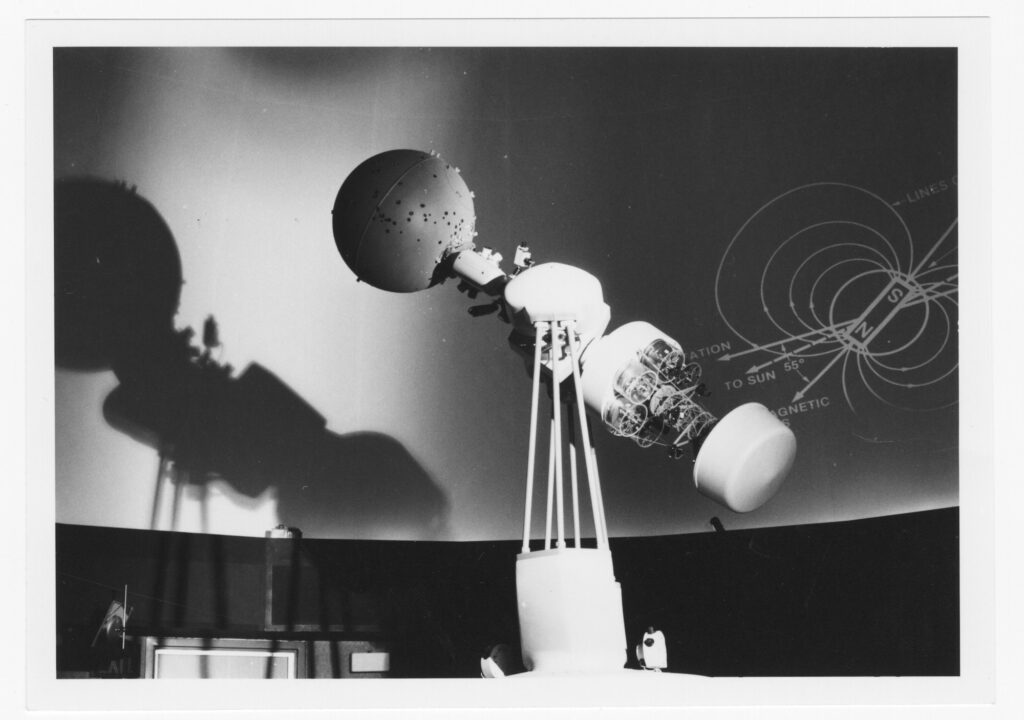
The Mallory Kountze Planetarium, located in the heart of the Durham Science Center at UNO, has provided that experience for visitors since it opened in 1987. For decades, it has captivated visitors with its immersive shows, yet remained mostly unchanged with much of the same look and technology.
However, this fall marks an exciting transformation for the planetarium. Thanks to privately funded renovations, visitors can anticipate a vastly enhanced experience. These upgrades include state-of-the-art equipment, interactive programming and revamped interiors featuring modular tables and seating.
Krista Testin, afterschool & planetarium coordinator for UNO’s STEM TRAIL Center since 2013, has been instrumental in this evolution. She passionately orchestrates shows and curates educational experiences for diverse audiences, from school children to university students and the public alike.
“All planetariums are important. They’re a gateway to STEM education,” said Testin. “They keep people involved and bring families together over shared experiences and memories of earlier visits. It is a lot of nostalgia, but it also keeps that interest and passion for science and science education alive.”
Testin is particularly enthusiastic about the new capabilities brought by Digitalis software, recently integrated into the planetarium’s operations. During a demonstration, she effortlessly navigates a tablet, projecting the night sky and seamlessly transitioning to virtual space travel among planets. This innovative system allows her to tailor shows in real-time, engaging with audiences and adapting content based on their interests.
The planetarium’s enhanced features also include a portable dome, funded by the ONE STEM community project. This mobile setup will democratize access to astronomy education, allowing outreach to communities unable to visit the Durham Science Center.
“You can easily use the tablet to run the condensed version of a show in the portable planetarium. The portable planetarium will be used, and we can bring the show to them,” she said.
Beyond astronomy, the planetarium offers versatile programming covering topics like DNA, climate studies and the arts. With advanced notice, Testin can craft customized shows for college classes or special events, enhancing educational outreach across disciplines.
In preparation for the planetarium reopening to the public on August 23, it welcomes a cohort of four student interns trained in the new technology. They will help continue pushing the boundaries of cosmic exploration, inspiring visitors to journey through the wonders of space and beyond.
LEARN MORE and plan your visit.
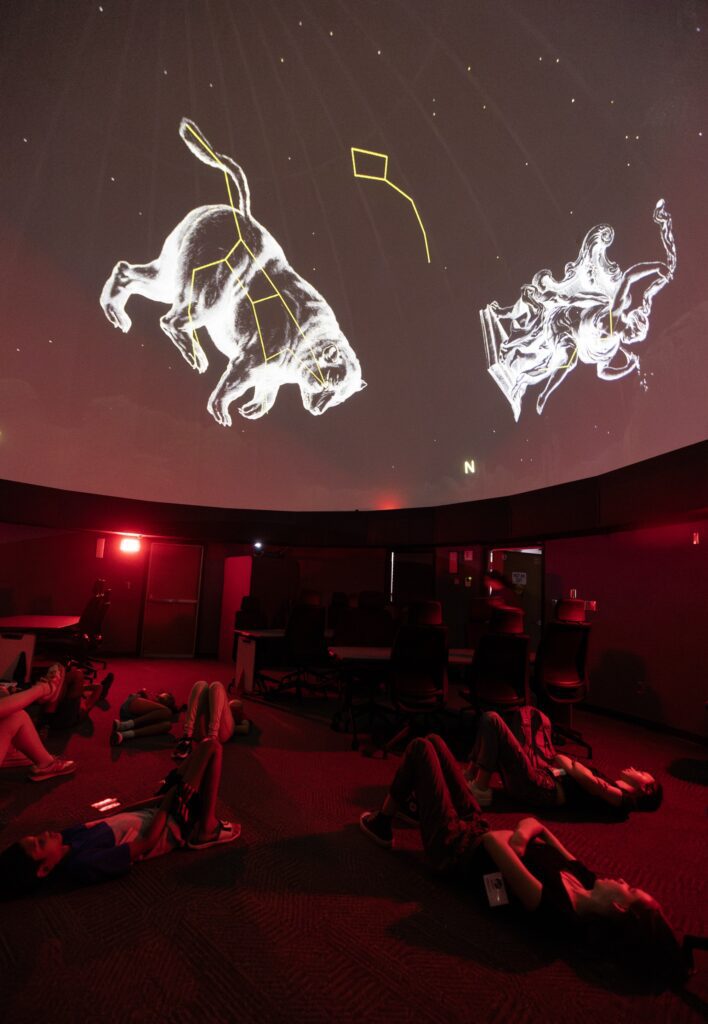
by Claire Staub, Communications Specialist, Dr. C.C. and Mabel L. Criss Library
The University of Omaha established a library in 1912, four years after its founding, in response to student requests. By 1928, a collection of 5,000 volumes was held in Joslyn Hall, located at 24th & Pratt. The Gateway student newspaper covered this milestone and hoped, “the library will be made a place where one can really study, and not a place to get together and play.”
When the University of Omaha moved to its current location at 60th & Dodge Streets in 1938, the library relocated to the northeast wing of what is now the Arts and Sciences Hall (ASH). Amidst World War II veterans returning home and the Baby Boomer generation reaching college age, the university faced an increasing demand for classrooms. In 1945, the library moved to the Eppley Building and remained there through the 1968 university integration into the University of Nebraska system and the evolution into the University of Nebraska at Omaha.
“The library was designed to meet the growing needs of not only the expanded student body that chose the new University of Nebraska at Omaha, but also their evolving needs,” said Amy Schindler, director of Archives and Special Collections. “This was through increased space for books, studying and instruction labs as well as offering a place of beauty and solace.”
In 1974, construction began on the $5.1 million University Library building, later to be renamed the Dr. C.C. and Mabel L. Criss Library. At that time, UNO was a commuter campus, and the new library provided an essential space for its 15,000 students. In 2005, the Dr. Guinter Kahn addition included a Library Café, the Archives and Special Collections unit and the Creative Production Lab makerspace.
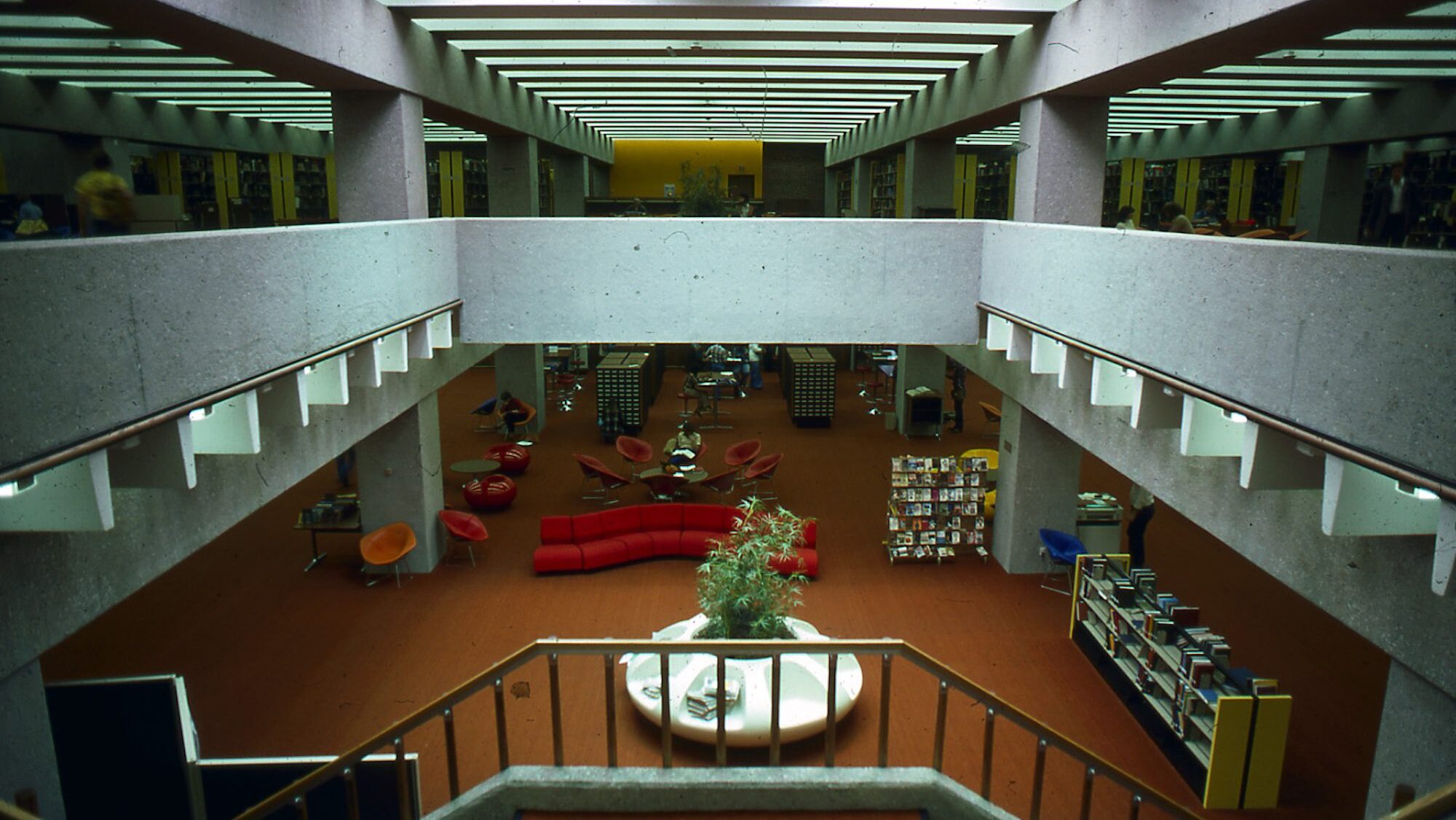
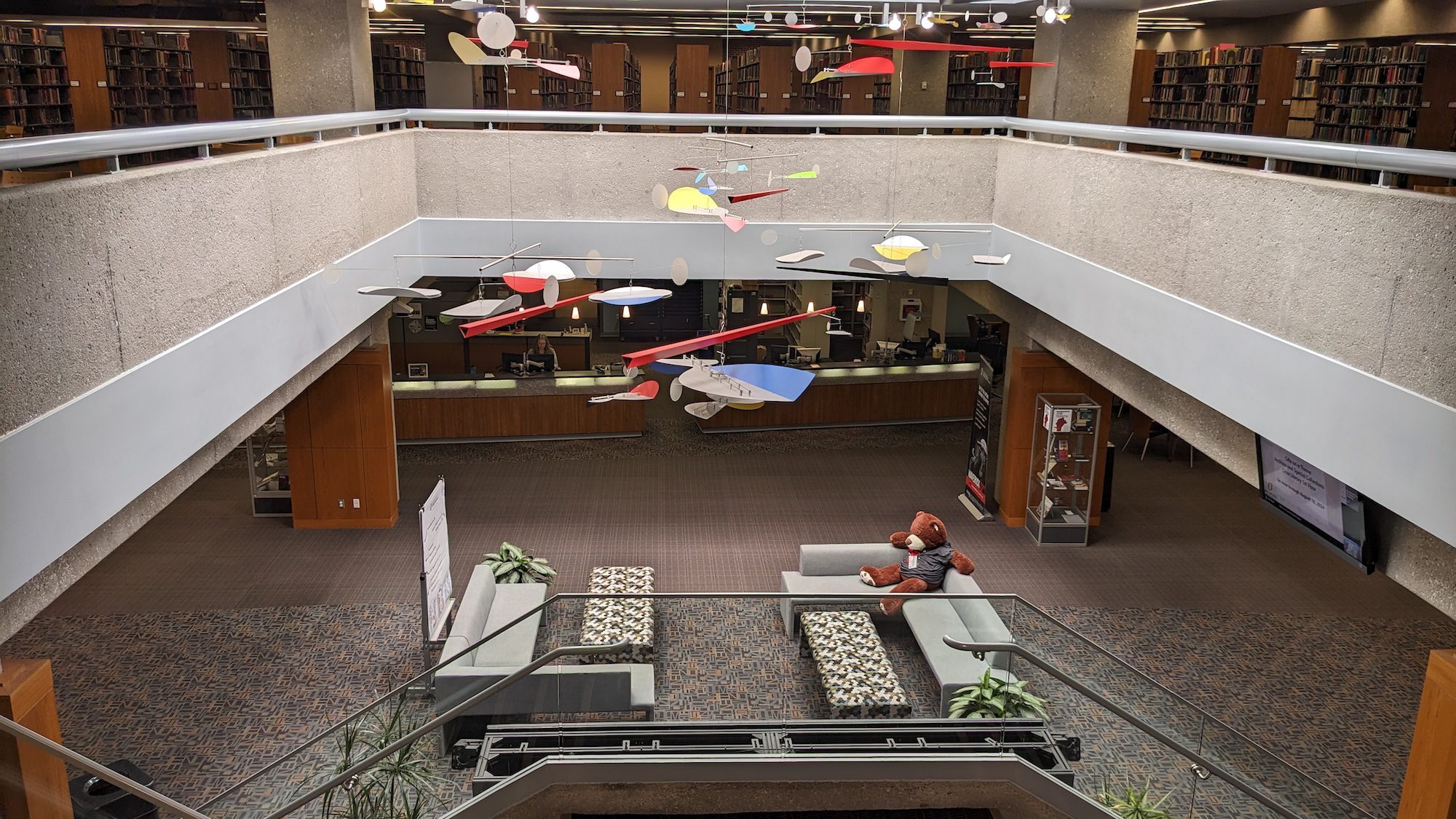
Fifty years after its groundbreaking, Criss Library continues to evolve to best serve the UNO community, adjust to changing technology and media formats, respond to student’s needs and provide vital campus and community services.
Earlier this year, a Starbucks opened on the first floor. The Creative Production Lab, whose services are increasingly in demand by students and faculty, will expand into the former Library Café in the fall of 2024.
“Changes like the CPL expansion and the addition of Starbucks shows how today’s academics pivot to meet student expectations,” said Dave Richards, dean of Library Services. “The library of the future will most likely contain more private and group study spaces.”
As the campus footprint and buildings have changed, one thing remains: the library is a prime space for the UNO community to go to for studying, socializing, collaborating and more.
Visit the Creative Production Lab for 3D printing, podcasting, and laser etching; re-visit Omaha or University history in the Archives and Special Collections reading room; relax with a beverage from Starbucks; or discover a great work of literature within the stacks of the library’s quiet third floor.
Explore the online open access DigitalCommons@UNO.
Visit the UNO Libraries’ Archives and Special Collections, the official repository of UNO publications and records relating to the history of the university.
by Amanda Craig
UNO’s College of Communication, Fine Arts, and Media (CFAM) is celebrating its 20th anniversary this school year.
CFAM brings together the School of the Arts, School of Communication, and School of Music, as well as KVNO 90.7 FM and UNO TV, under one umbrella. With three schools that have their own unique disciplines, goals and faculty, how does this joint dynamic work?
“Whether you’re in music, art, theater, journalism, communication studies or creative media,” said dean Michael Hilt, “it’s the creativity that the students, faculty and staff bring to campus every day that unifies us and sets our college apart from others.”
That common thread has empowered enthusiastic faculty to continue developing their skills, offer a supportive culture and strive for student success.
The Writer’s Workshop in the School of the Arts cultivates a place for creative writing students to perfect their craft through faculty mentorship, workshops and visiting writers.
Kevin Clouther, program coordinator and associate professor for the Writer’s Workshop, emphasizes the curated approach for each student.
“The student is going to get a lot of individual attention on their work and join a community with similar ambitions and interests,” said Clouther. “They’re getting mentorship that isn’t based on a sort of generalized set of principles, but on what the student’s trying to accomplish.”
In the School of Communication, instructor Jodeane Brownlee praises the comprehensive journalism program. Students learn vital skills, work in different roles with media and visit with professionals.
Brownlee also serves as the advisor for UNO’s Women in Media student club. Started by reporter and UNO alumna Ana Bellinghausen, Women in Media provides networking and community for women journalists.
“They do interviews with big names like Mina Kimes, Laura Rutledge and Jared Allen,” said Brownlee. “As important it is for me to teach students, when they see opportunities and make things happen for themselves, that’s really fun to see.”
Karen Fannin, Director of the School of Music, shares that music faculty work hard to prepare students for the next steps in their careers and musical journeys.
Fannin is excited for upcoming opportunities, saying, “We look forward to continuing our success with our Music Education, Performance, Music Technology and Jazz programs. This fall, we are launching our Music Industry concentration and a Commercial Music Ensemble, and we look forward to welcoming students with those interests into our program. We are constantly striving to create a welcoming and inclusive environment for all students and musicians.”
The path for enrollment in CFAM has become much more accessible through the largest fund for scholarships that CFAM has ever received. The Richard Holland Endowed Scholarship Fund, totaling $3 million, will provide about 12 scholarships each year.
“It is such fantastic news. It will help many of our students going forward,” said Hilt. “This gift from Holland’s foundation is not only a testament to us, but also a testament to him. He funded what he believed in.”
Looking ahead, Hilt anticipates some building renovations and continuing to work hard to draw in new college students. He is eager to continue building on CFAM’s success and working with the wonderfully creative faculty, staff and students.
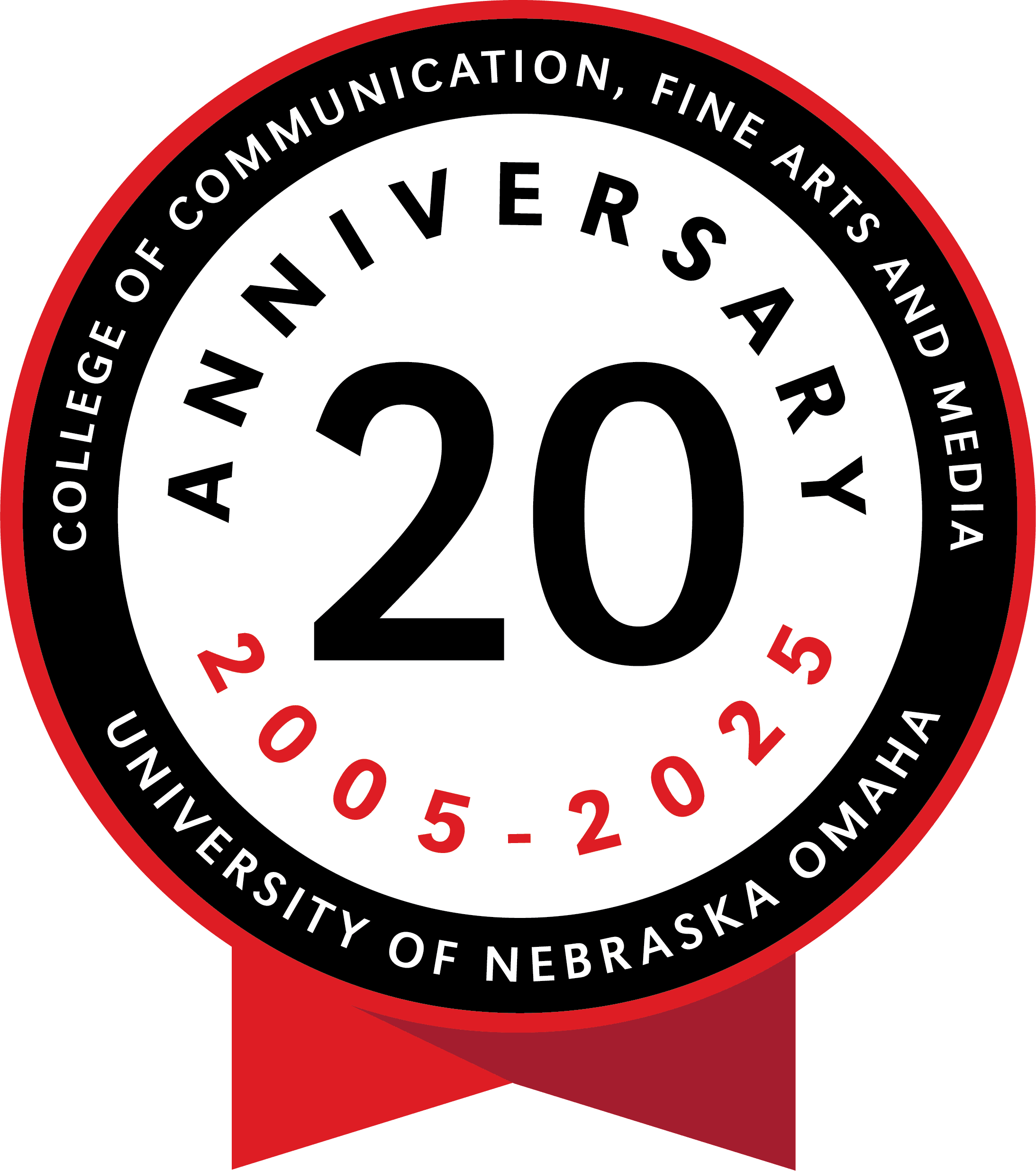
SAVE THE DATES
September 26, 2024
College of Communication, Fine Arts, and Media 20th Anniversary Kick-Off
Strauss Performing Arts Center
7:30 p.m.
Performers and entertainment from School of the Arts, School of Music, and School of Communication
April 23, 2025
College of Communication, Fine Arts, and Media 20th Anniversary Closing Reception Performance of Commissioned Piece
Strauss Performing Arts Center
